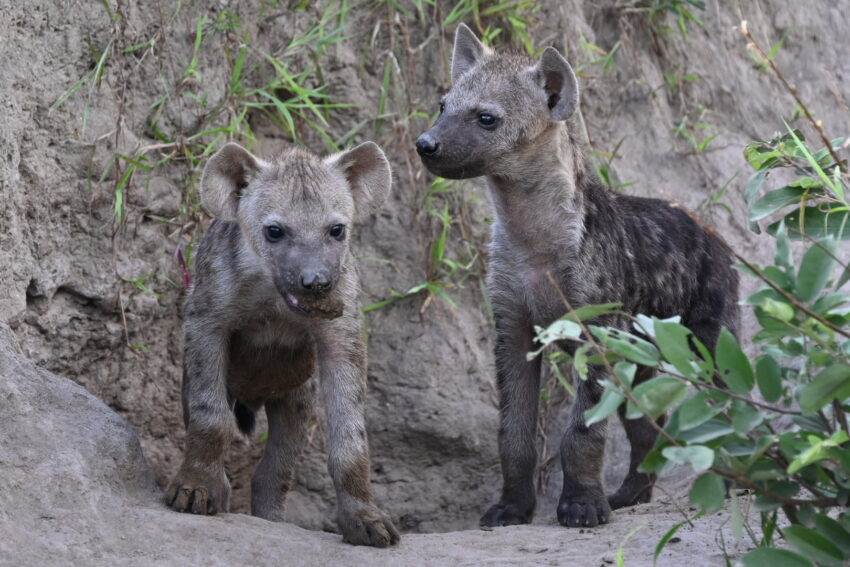It’s another beautiful day at Dulini – let’s get underway, shall we?
We’d heard lions calling at breakfast. Scott asked us to indicate the direction, and I did the best I could – and so that’s where we’re headed.
I guess I chose wisely, because we soon encounter the lioness-cub family group once more:

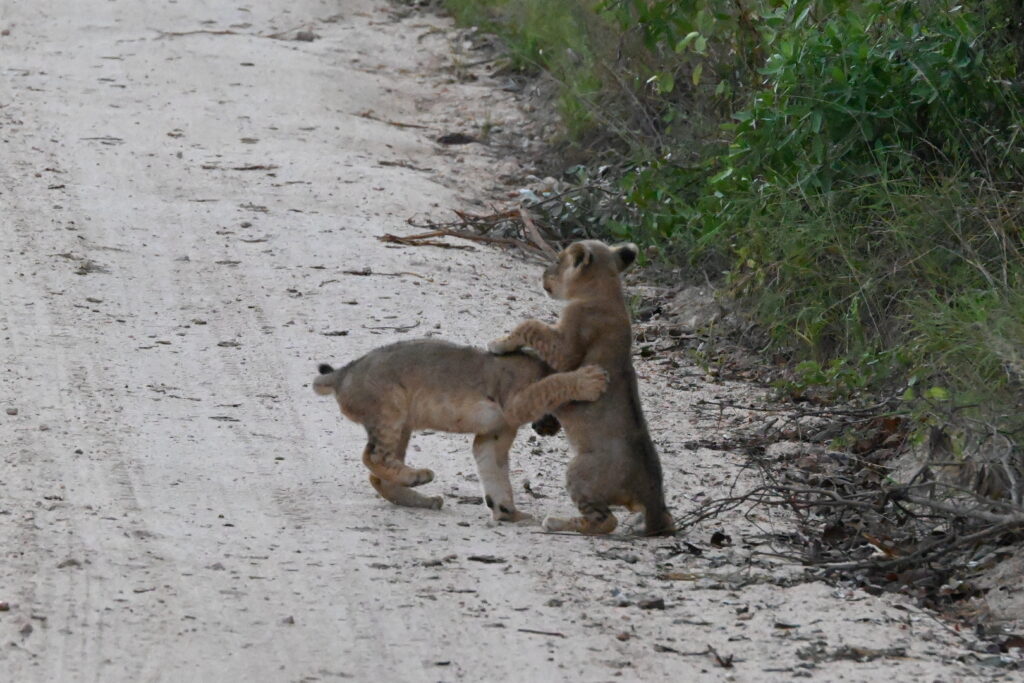
They are right on the main road, which is definitely slowing down some of the taxi drivers.
And as I’d heard earlier, the lionesses are calling for the male lions:
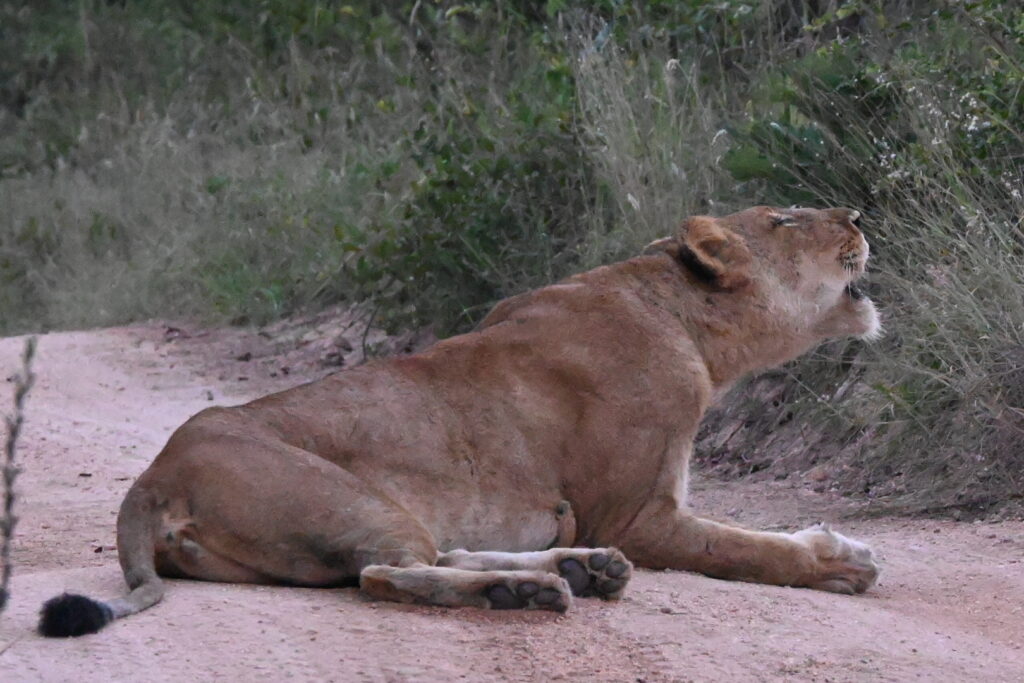

While the adorable cubs seem to take two steps sideways for every half-step forward:
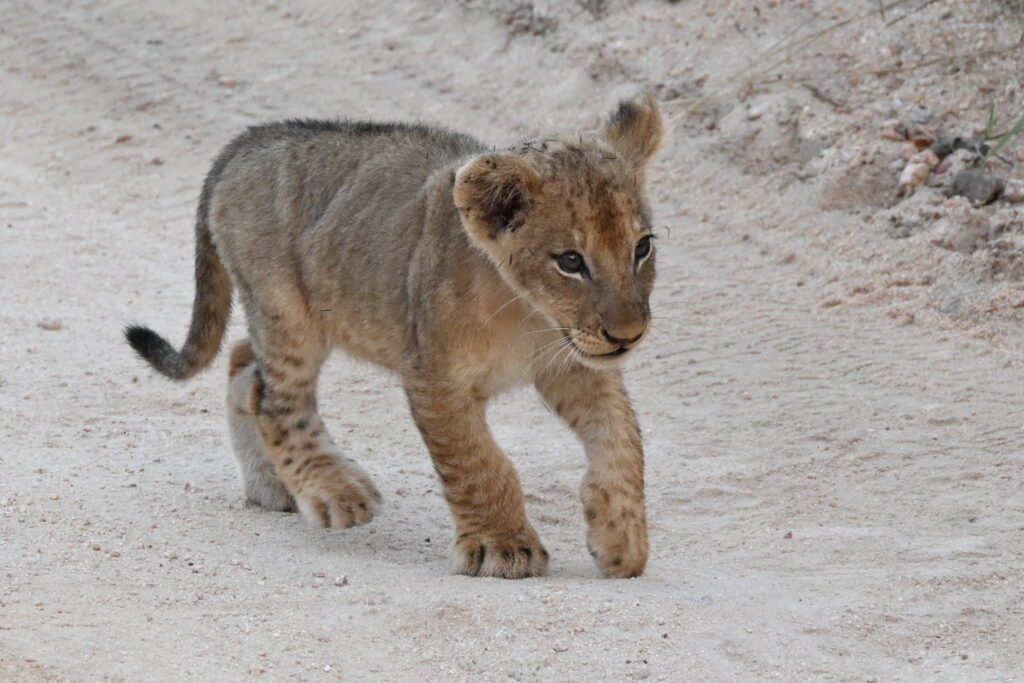
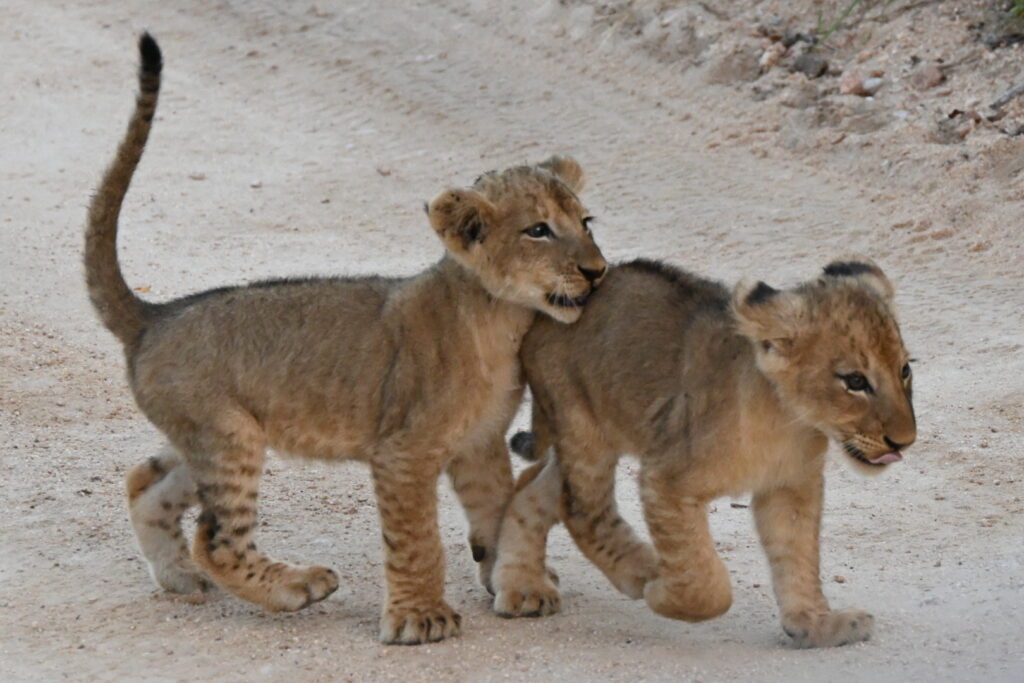
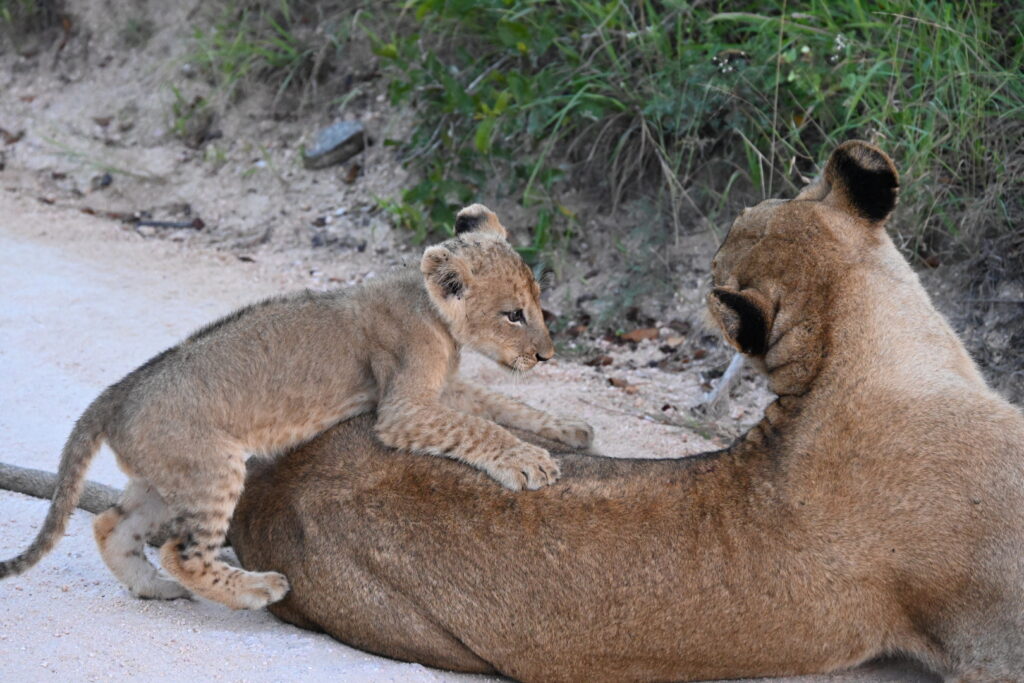
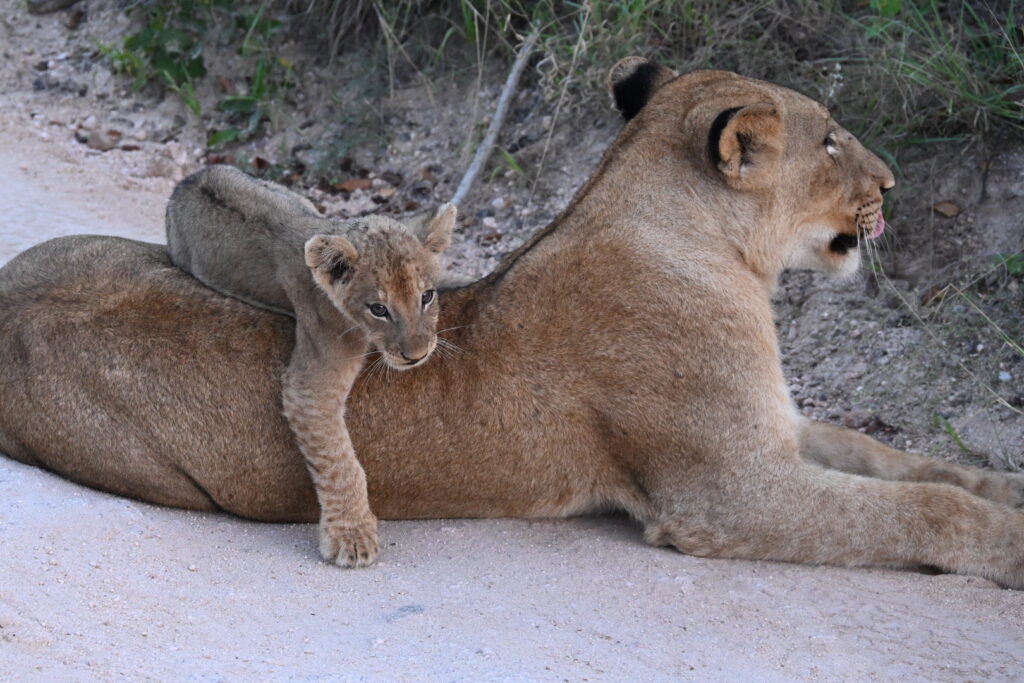
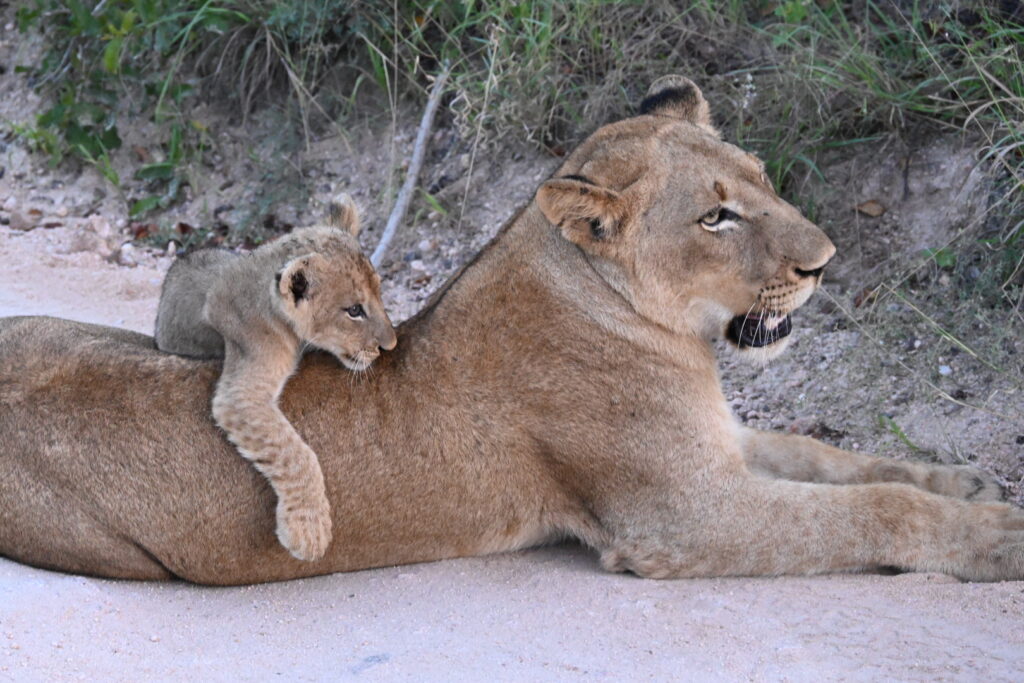
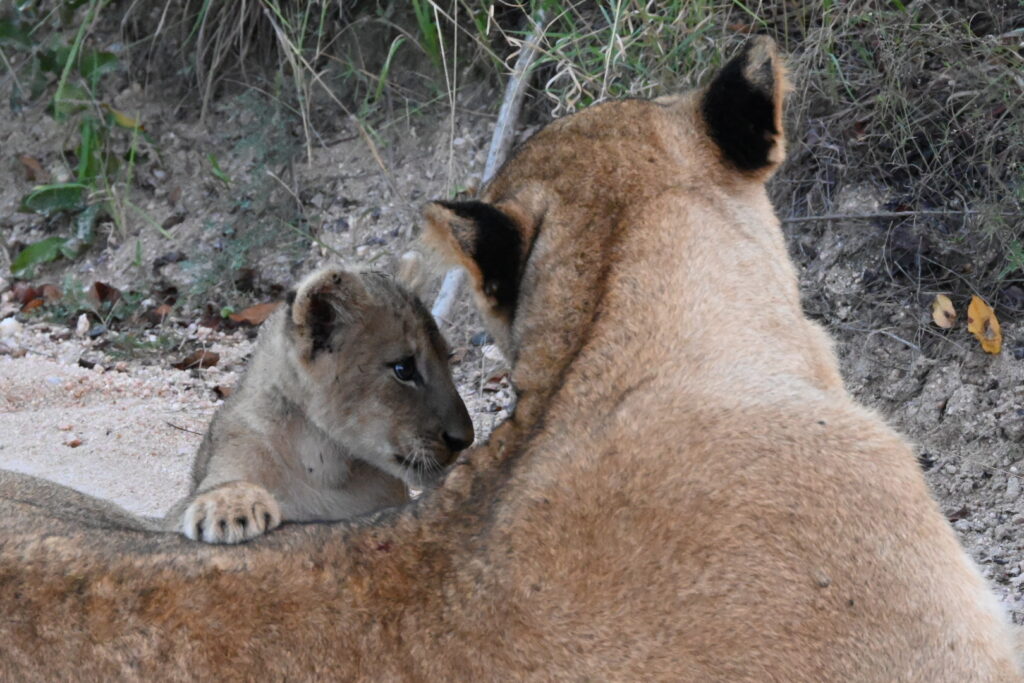
Hope you’ve got fast internet today, because there are going to be a lot of cub photos
The male lions return the call, but it sounds like they are headed further away – so the lionesses and their cubs continue moving onward, albeit slowly.
“Tree!” says one of the cubs, apparently unsure as to whether it’s a lion or a leopard.
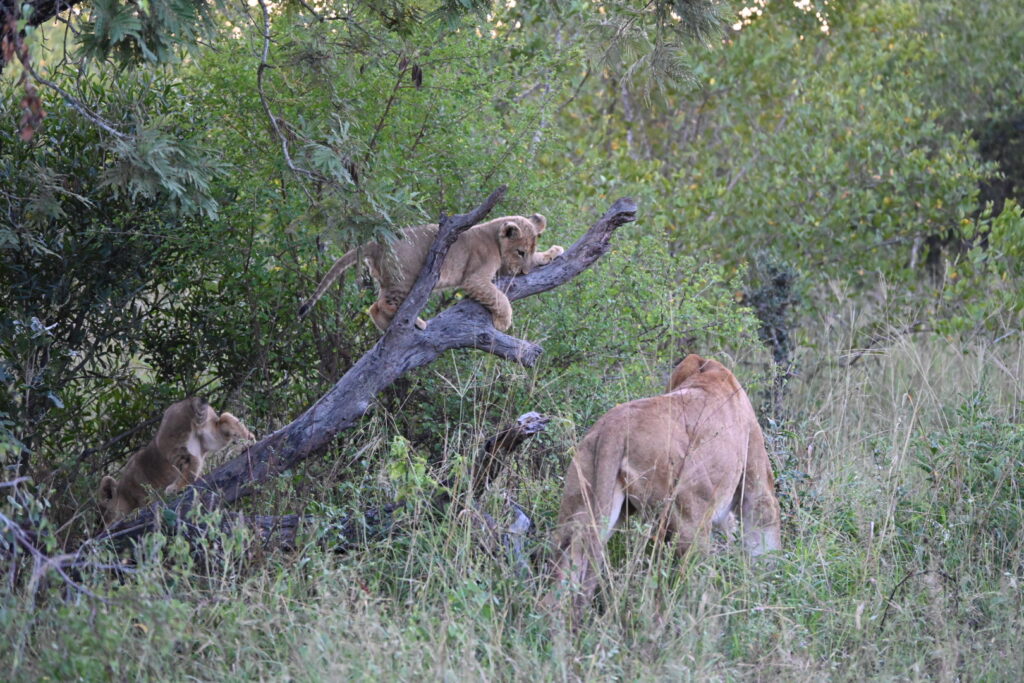
Or how to get down now that it’s climbed up:
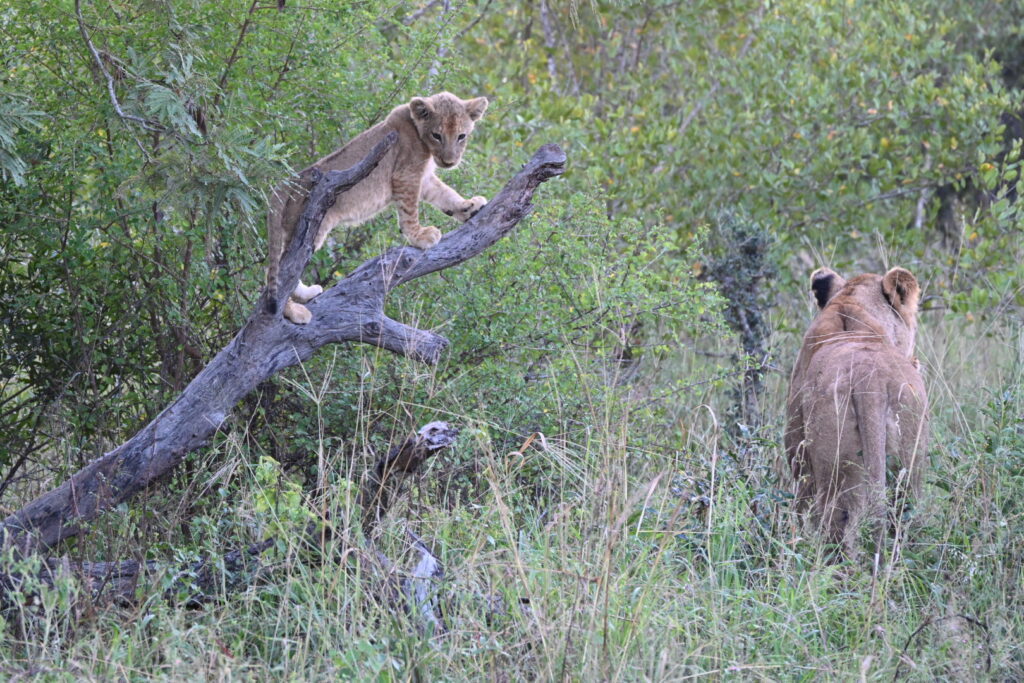
“Hey, don’t leave without me!”
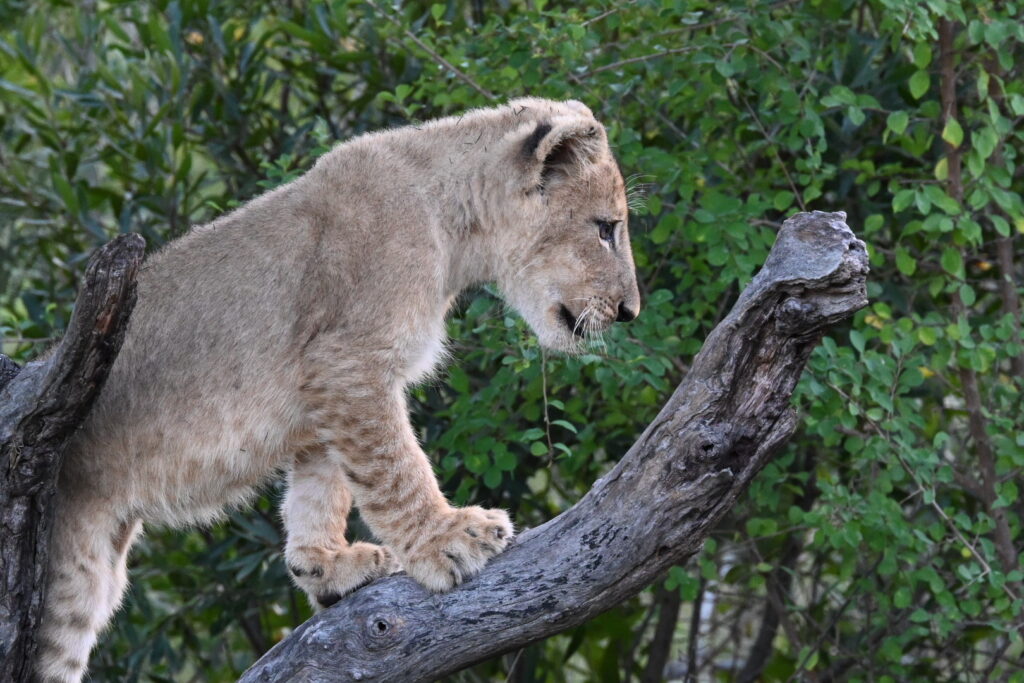

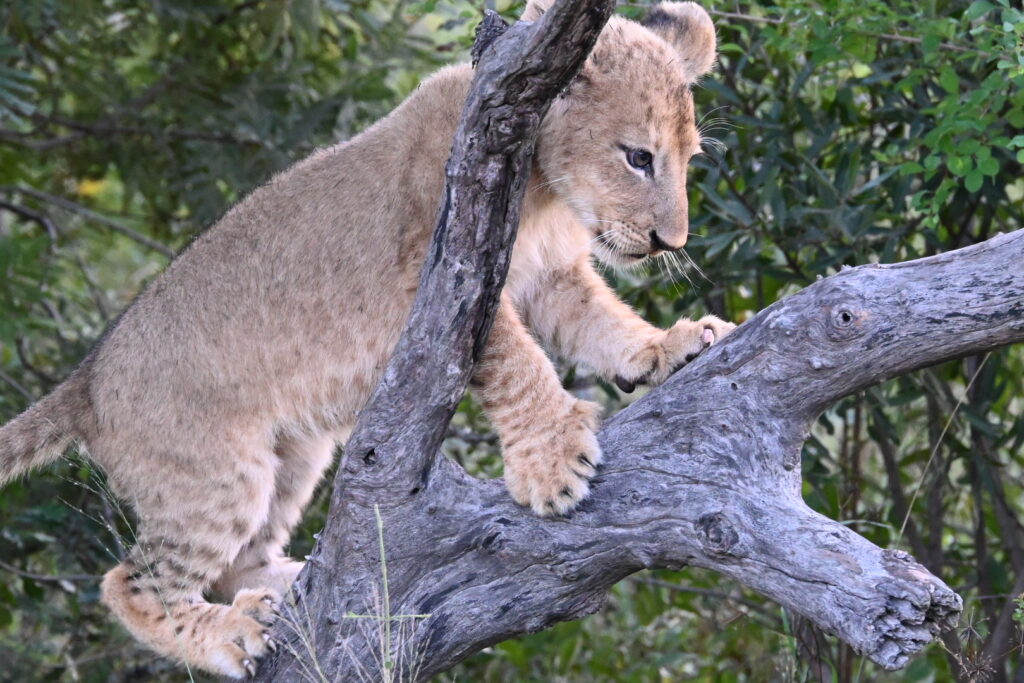
But the lionesses do carry on, and the cubs eventually catch up.
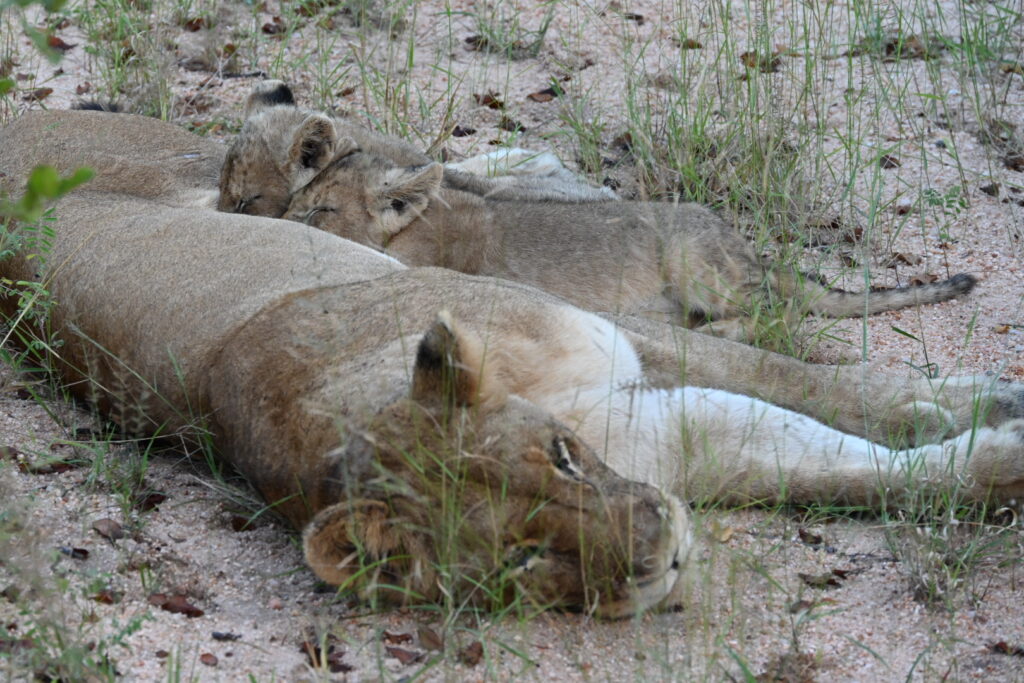
I think they’ll be here for a while – so it’s time for us to move along and let others have a turn.
The light is coming out, bathing Sabi Sands in a rose gold glow.
We happen upon a giraffe:
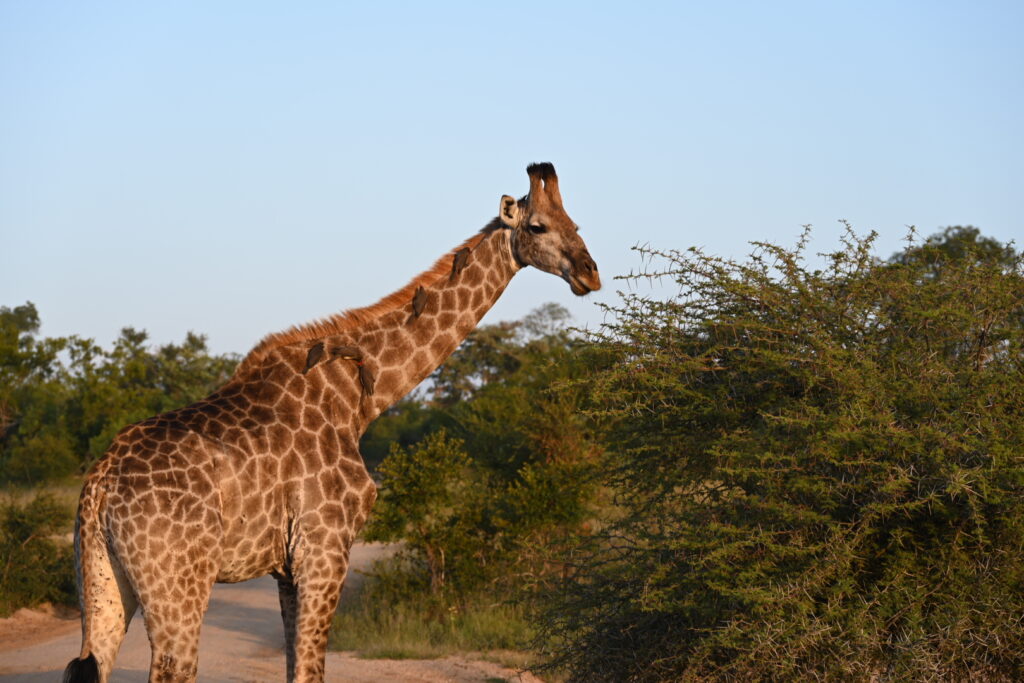
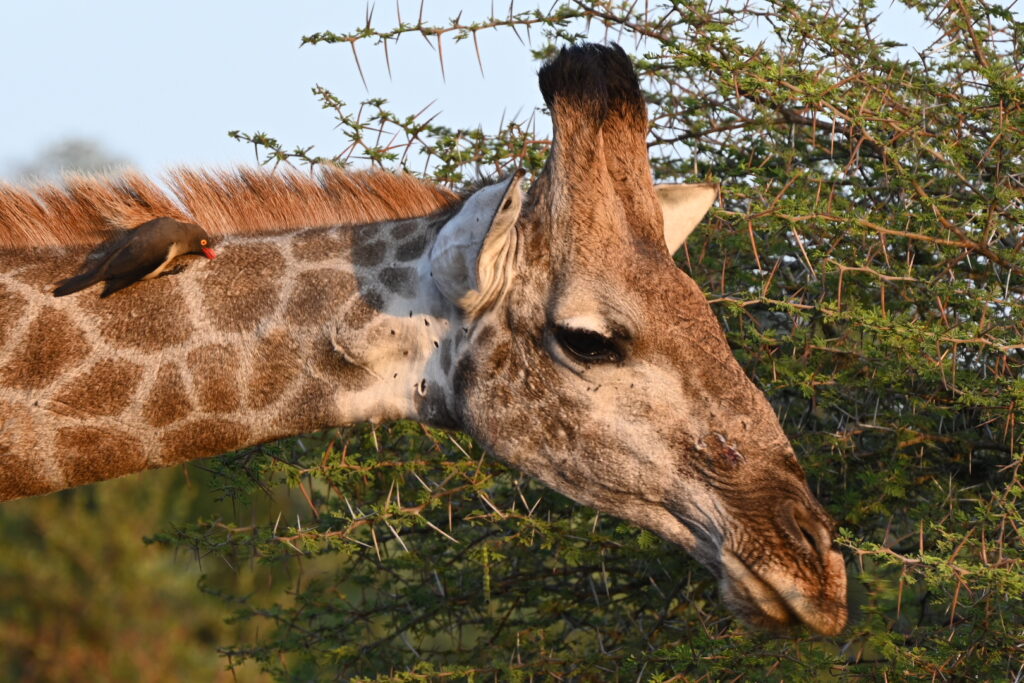
These fellows seem commonplace now, but some guests come here solely with the intention of seeing giraffe – and then don’t see any. So we’ll be grateful for each sighting we get.
We then come across a pair of white-fronted bee eaters:


These birds will stun bees and then rub them against a surface to remove the stinger and toxins before eating. They nest deep in the earth by digging – sort of like the honey badgers of the bird world.
We move on to a distant termite mound, now a hyena den.
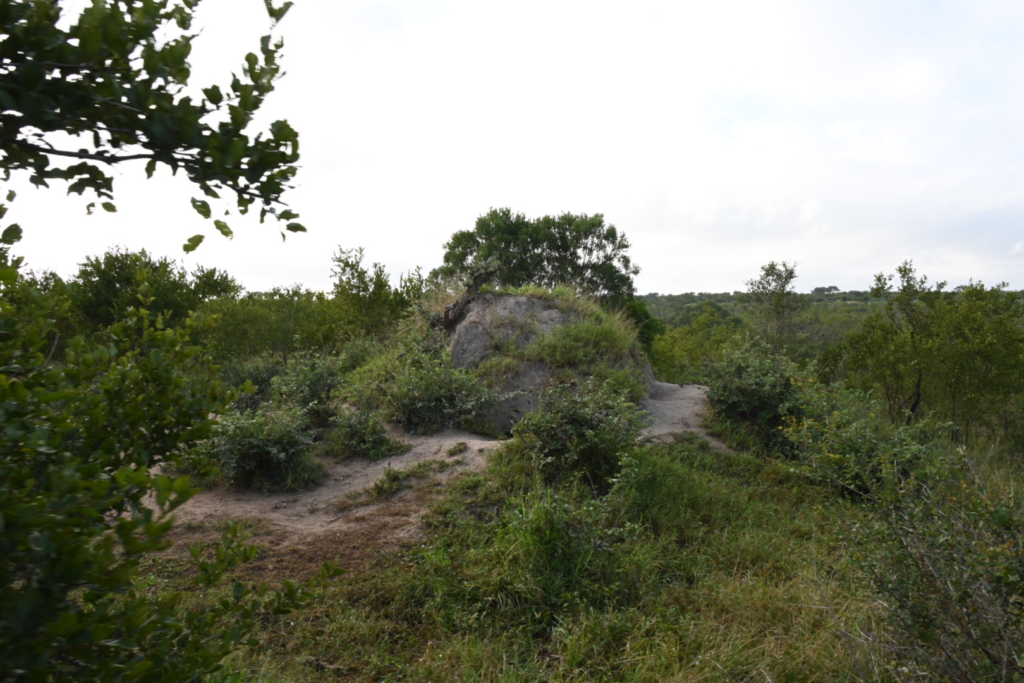
Just because we’re at their den, it doesn’t mean that they hyenas will be easy to spot – the adults will be out hunting, while the youngsters are well trained to stay out of sight while home alone.
But apparently curiosity gets the better of them, and a cub pokes their head out:
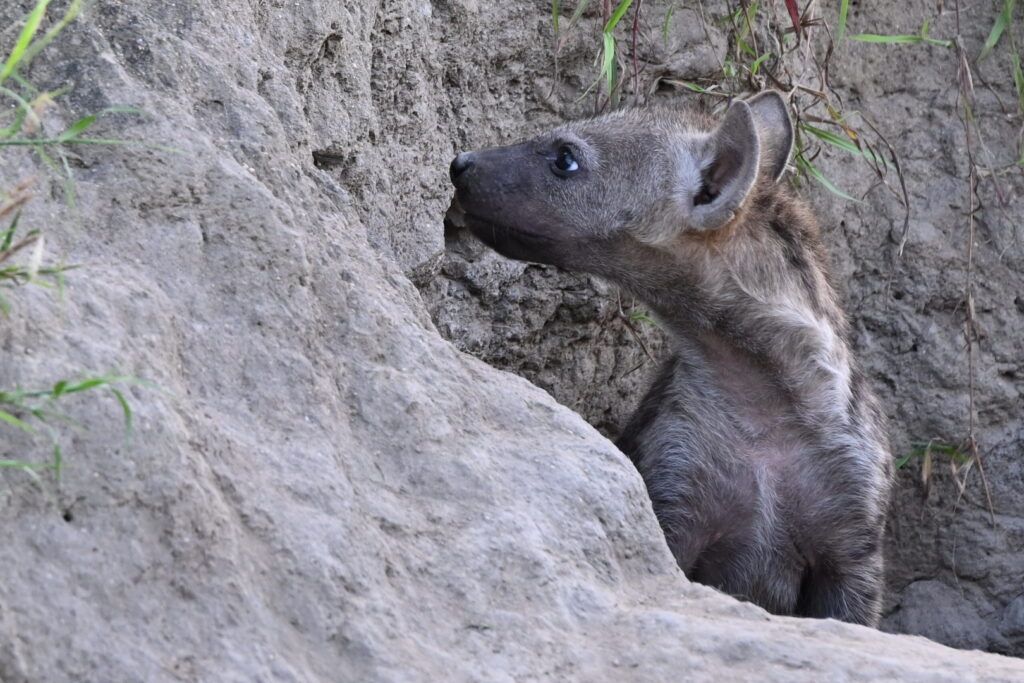
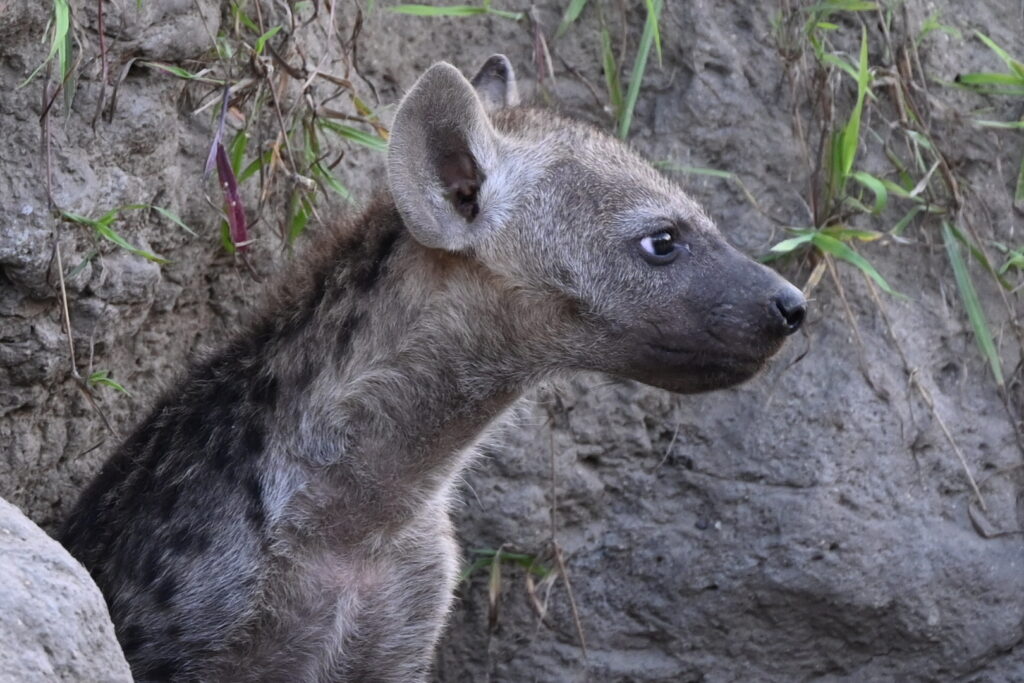
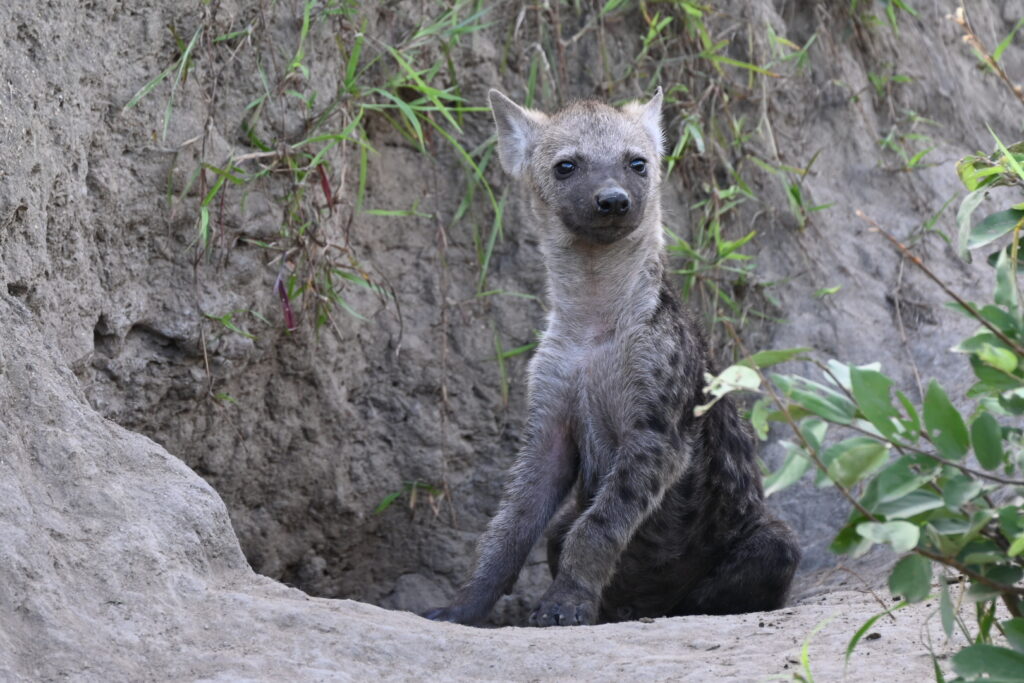
The hyenas don’t dig these dens themselves – the anteaters eat the queen and then suck up the rest of the ants at their pleasure until the warthogs move in, and the hyenas will follow later on.
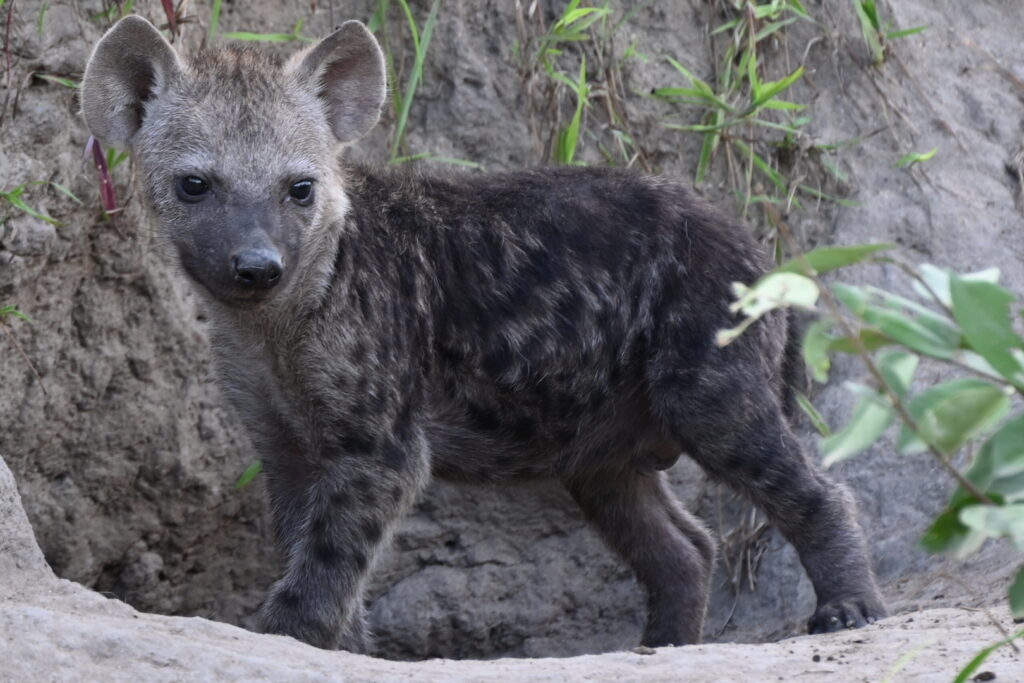
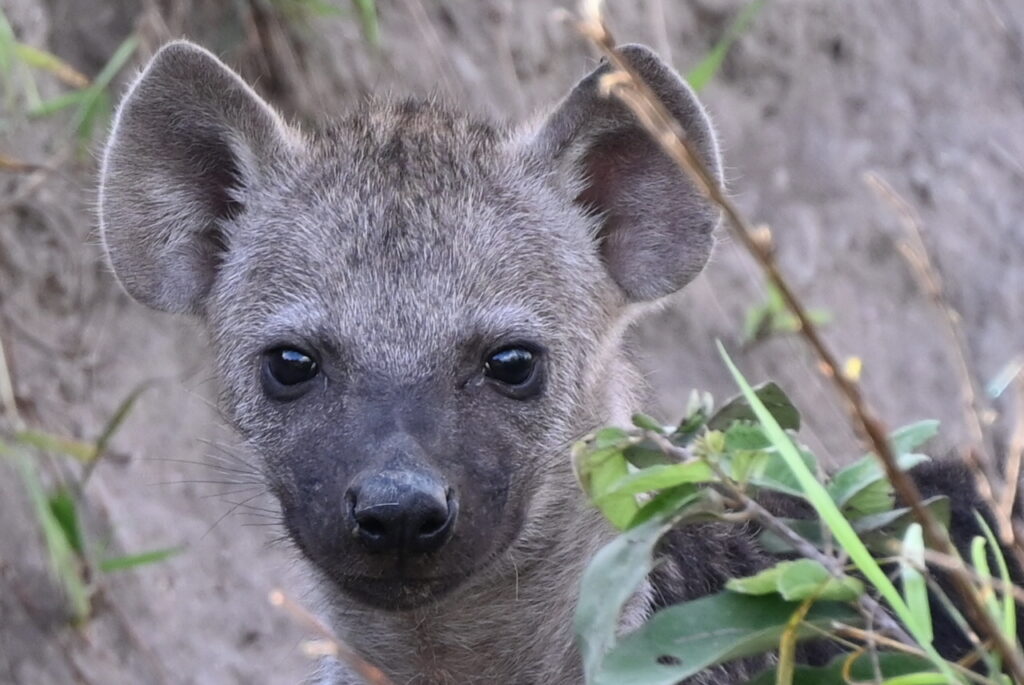
Then a second cub emerges:
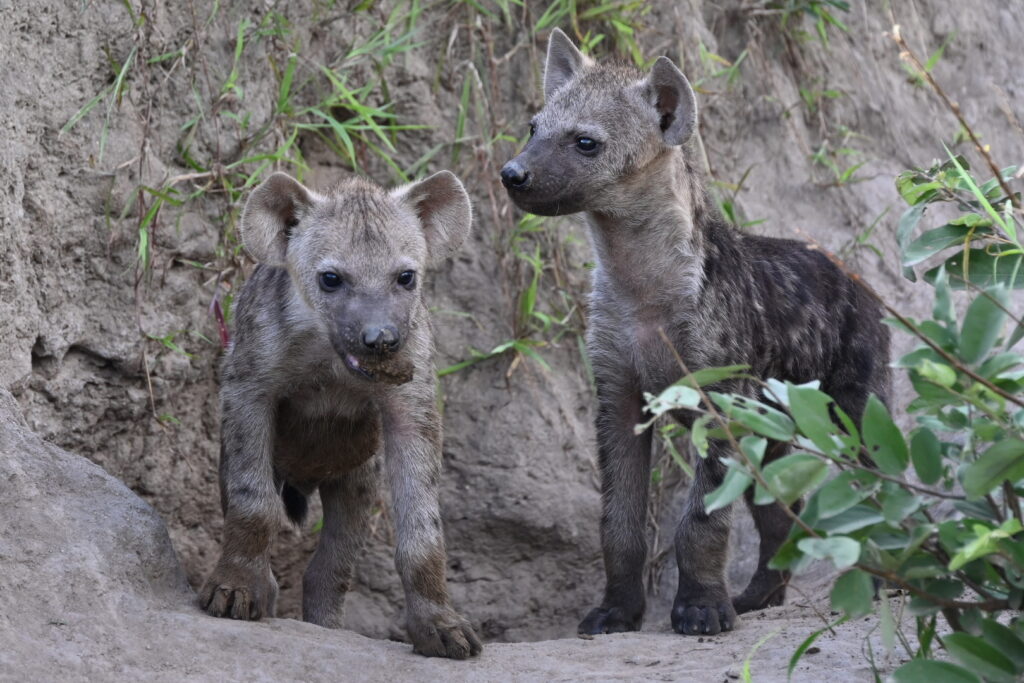
This one apparently with a hunk of termite mound clenched in his mouth:
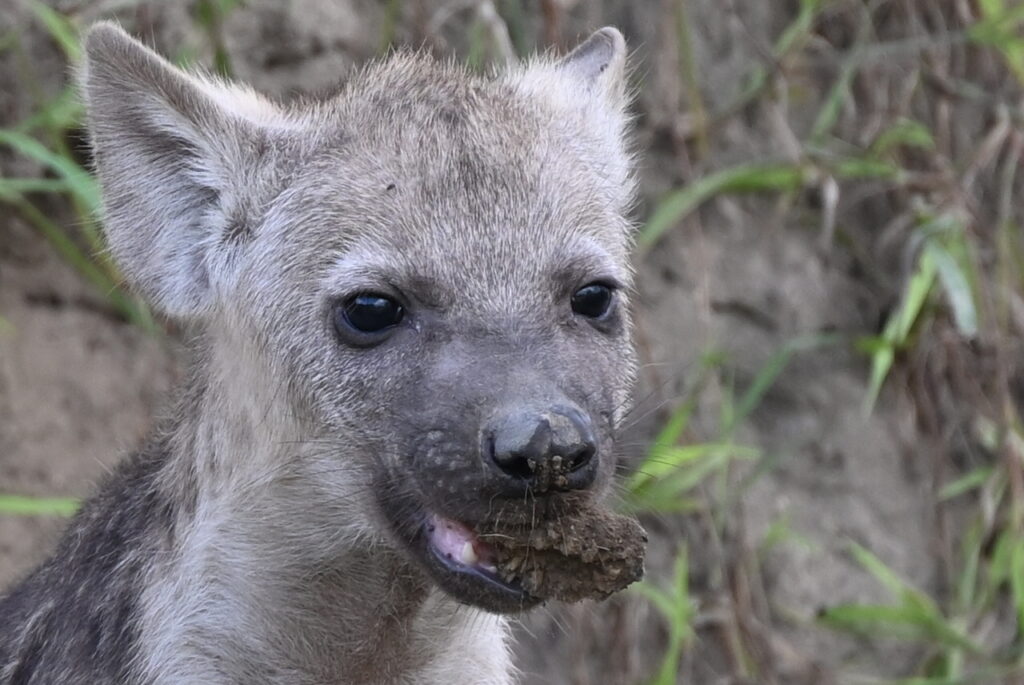
They take some cover in the bushes:
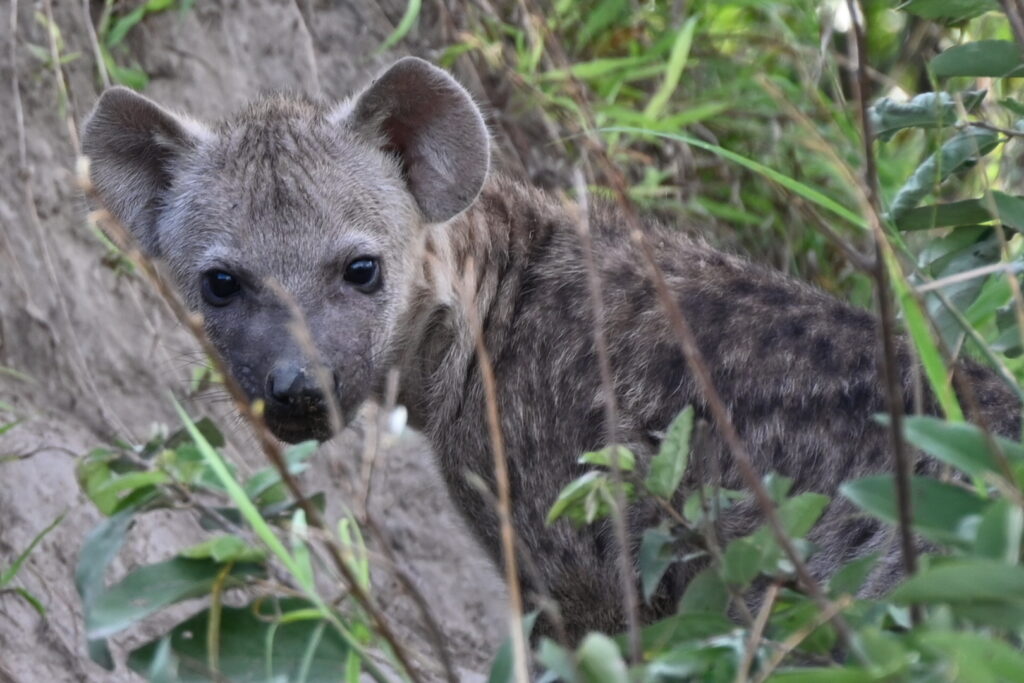
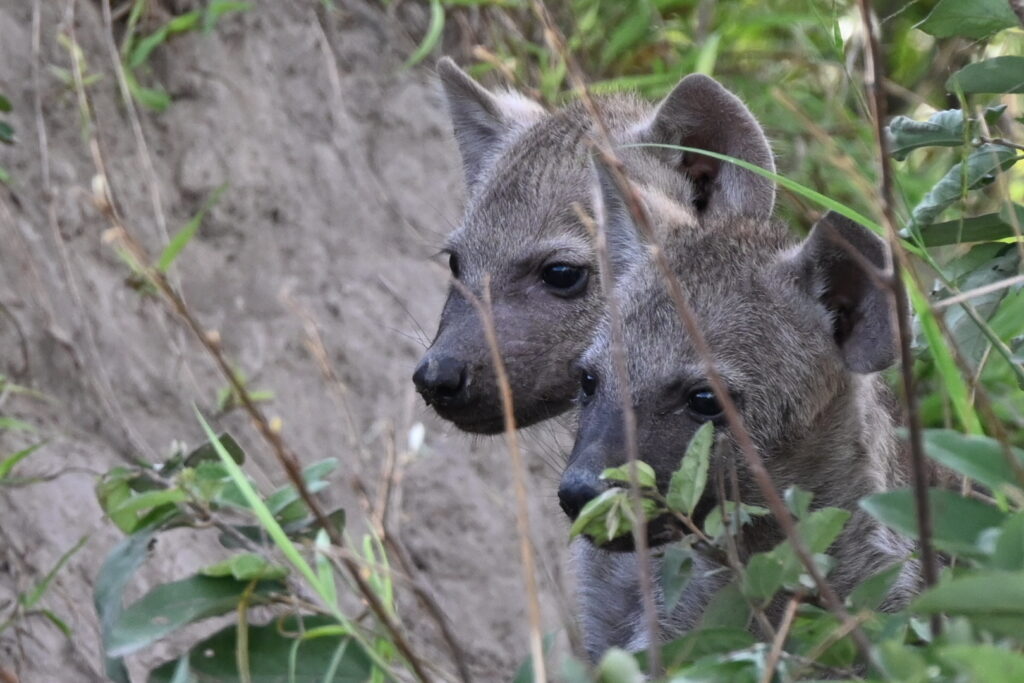
And an older cub emerges:
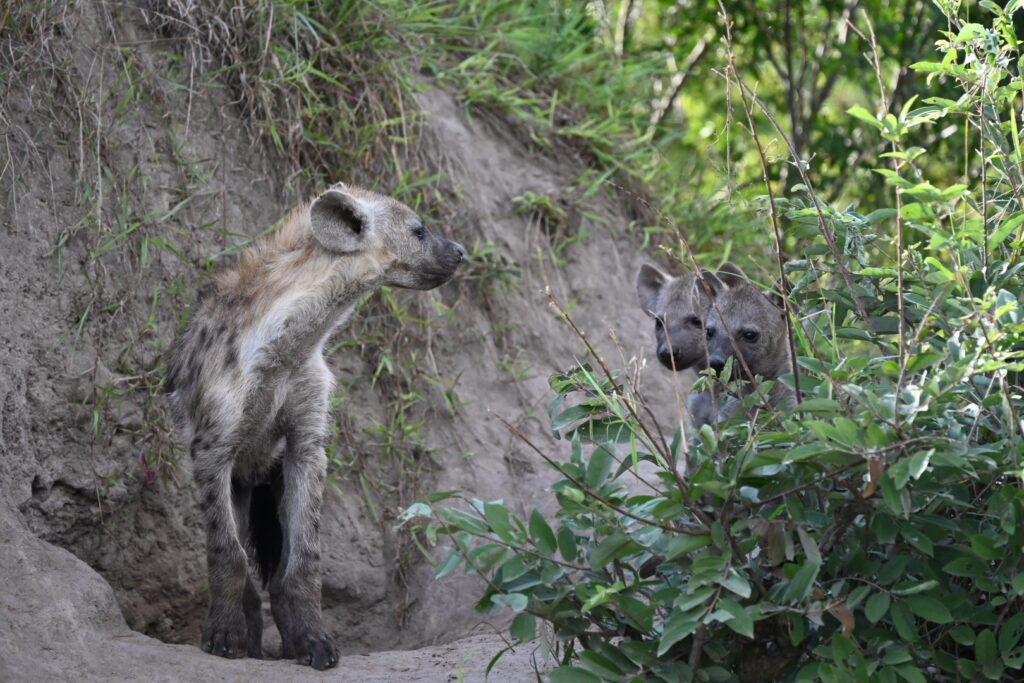
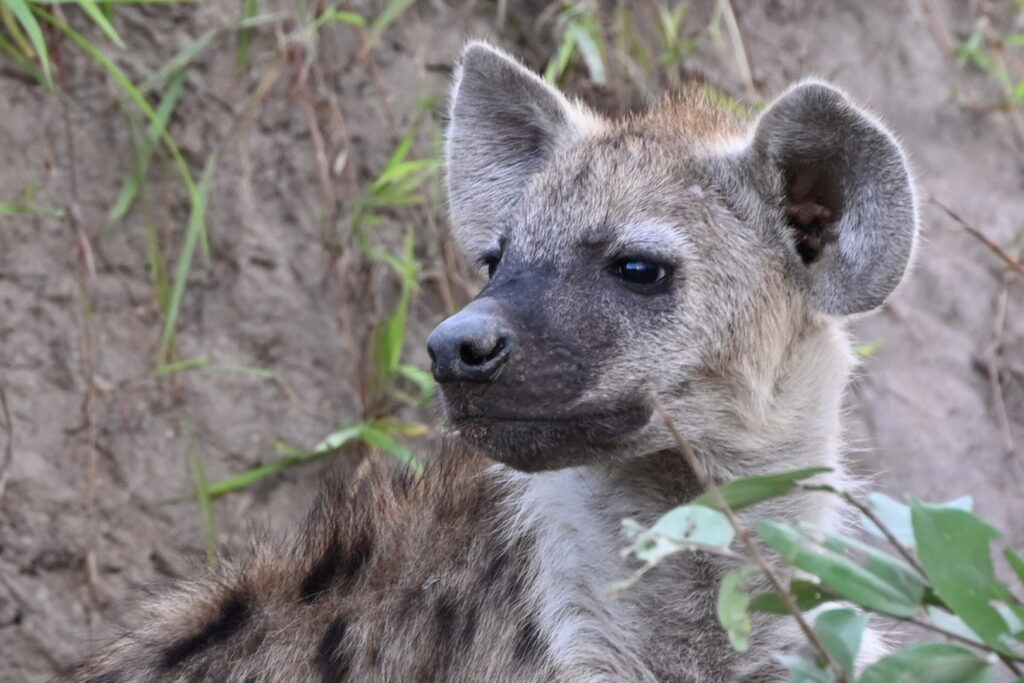
Hyenas are now my daughter’s favourite animals.
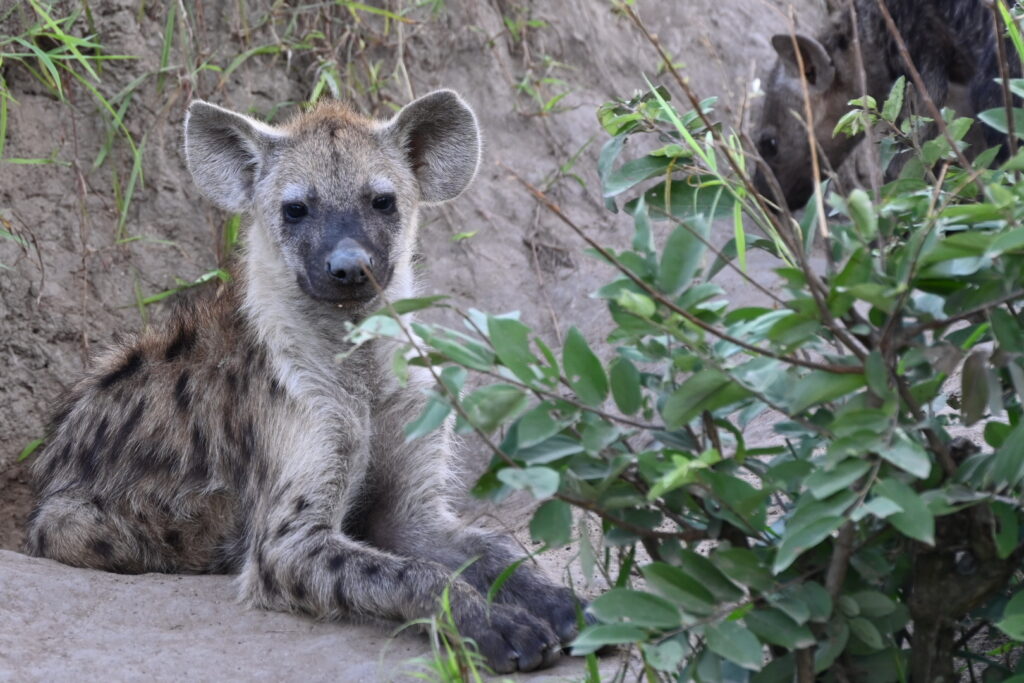
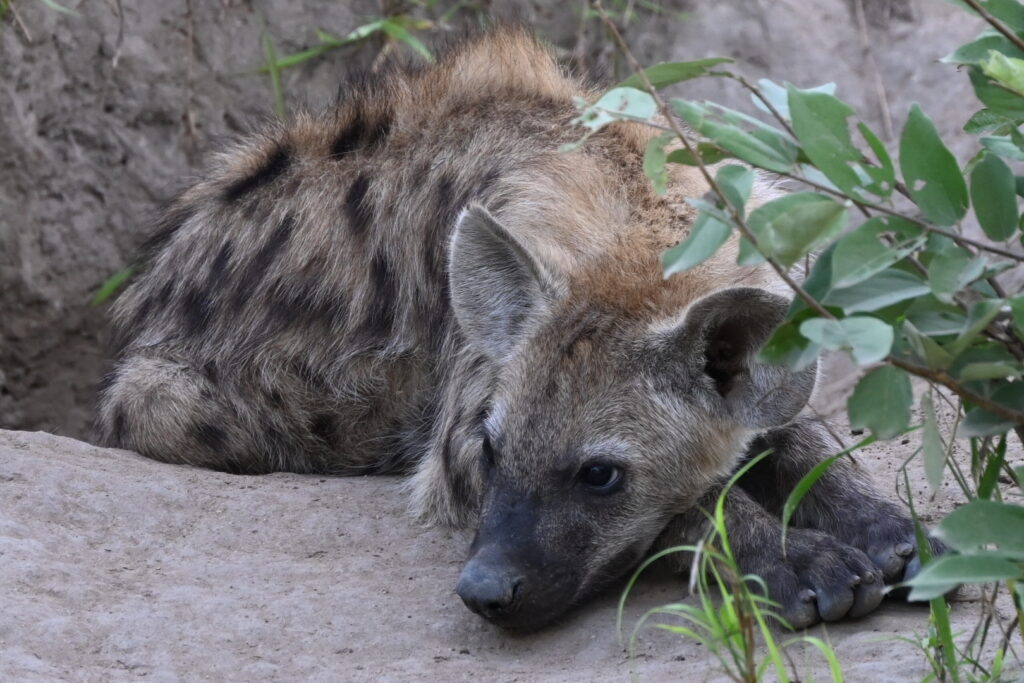
Then Scott gets the call – a male leopard has been spotted. We join the chase, and are rewarded with a brief close encounter:

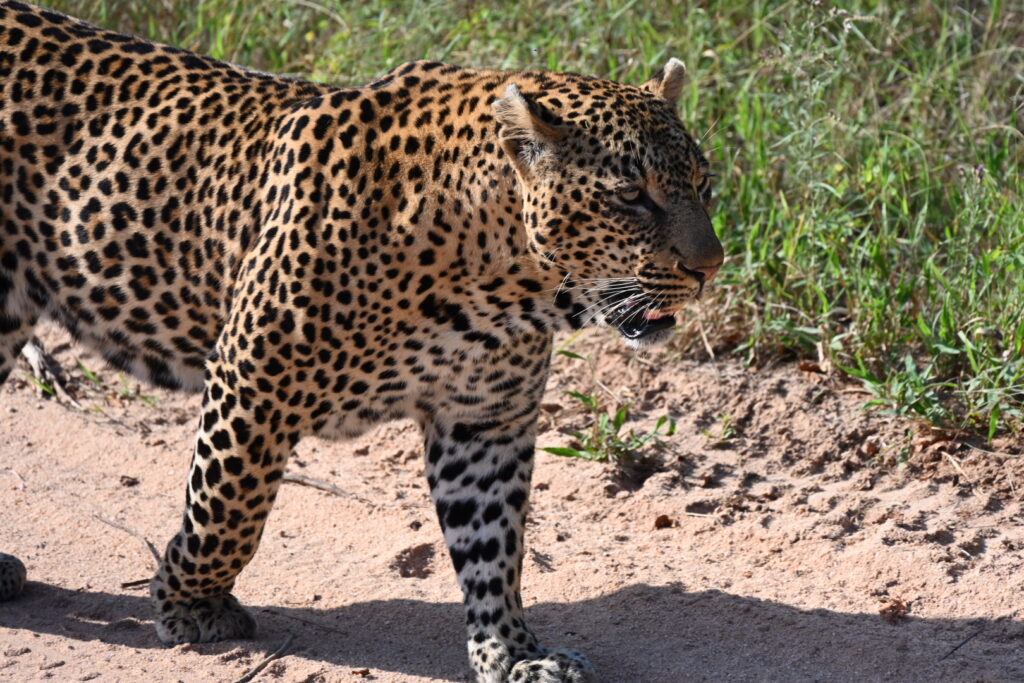
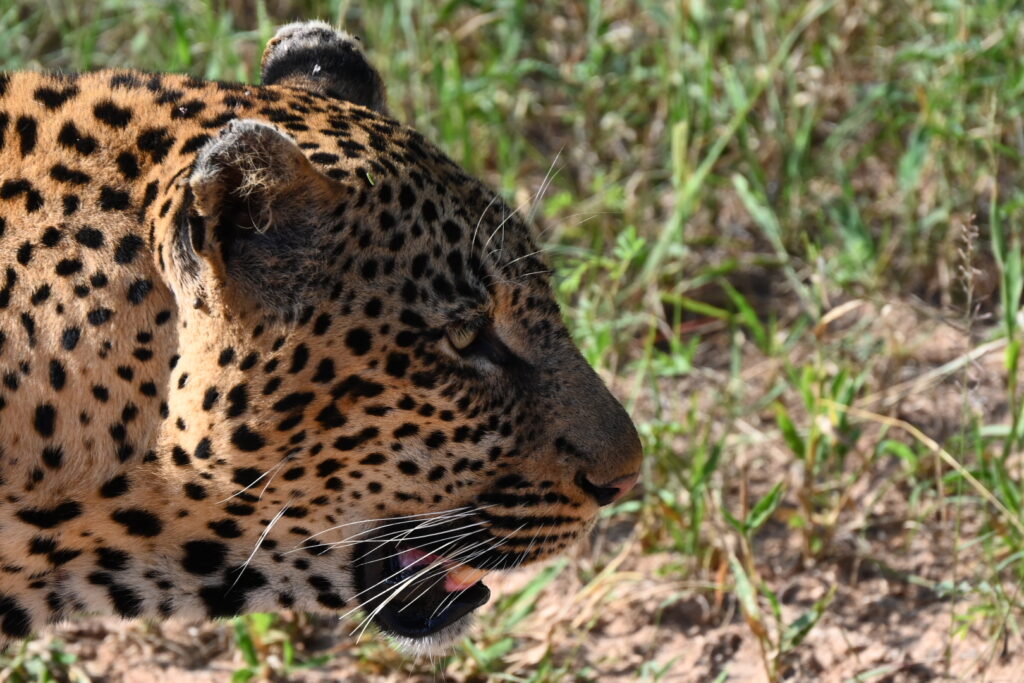
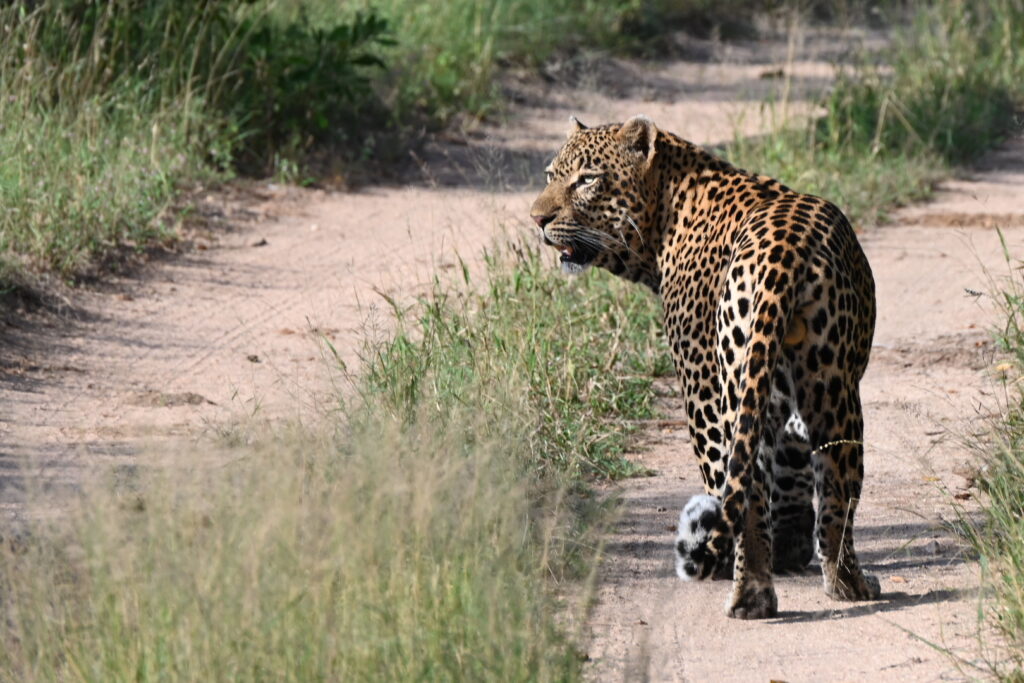
This is one of two younger male leopards currently challenging the older leopard in the area for dominance. And as you can see, he is what scientists refer to as one chonky boi – no question that he will pose a threat to the elder leopard as time marches on.
Back to Dulini Moya to finish packing so that we can switch lodges later today. On the way, we spot the same crocodile once more:
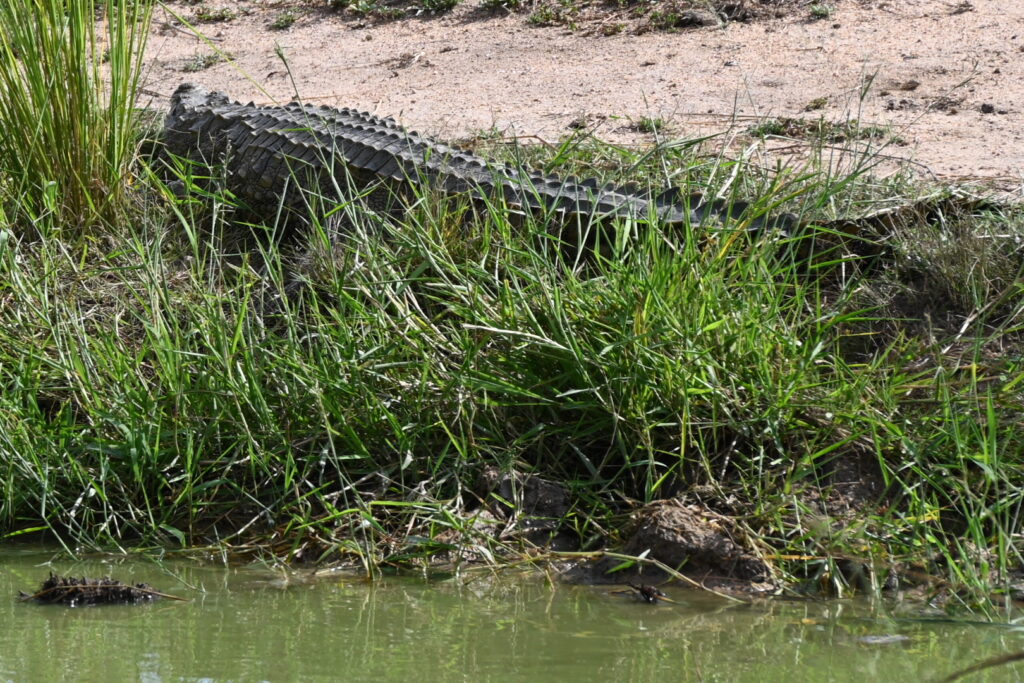
We say our goodbyes to our guide, Scott. Nathan will be taking over as our guide once we head to Dulini River, the second of three Dulini properties. (We will not be visiting the third camp, Leadwood, this time out.)
Time for one last photograph of Moya’s reception area:
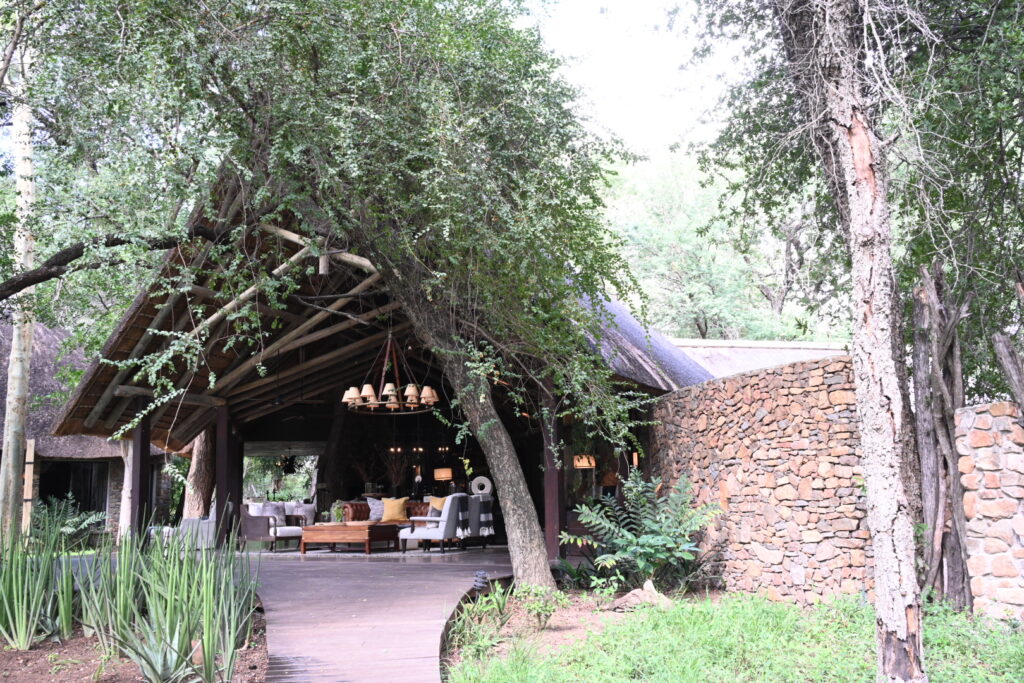
It really is a beautiful property, with a classic old-school feel.
Up to the shop to settle up for tips, which are paid per property. I’d prefer an all-inclusive system but that’s not how it works here. Thankfully they provide tipping guidelines so we follow those and round up a bit. Everyone’s been exceptional, so ultimately we’re glad to recognize that with some extra tips.
We need to be out the door by 11 am, so we finish packing and then call reception so they can move our bags via one of the vans – while Clifford gives us a miniature game drive during our brief transfer.
We come across some elephants wallowing in the mud:
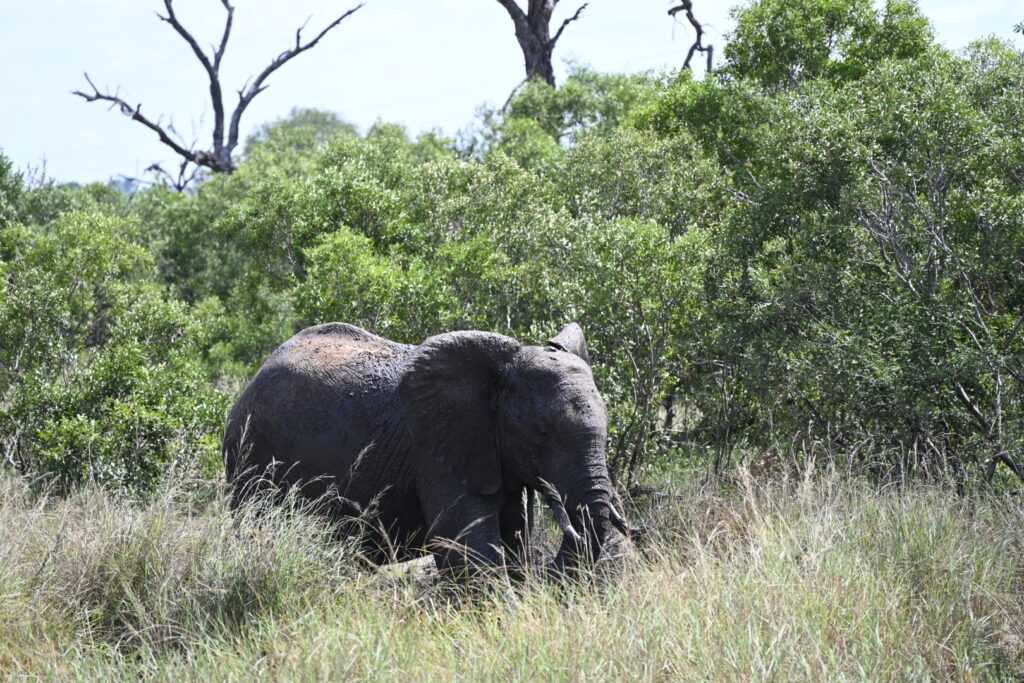
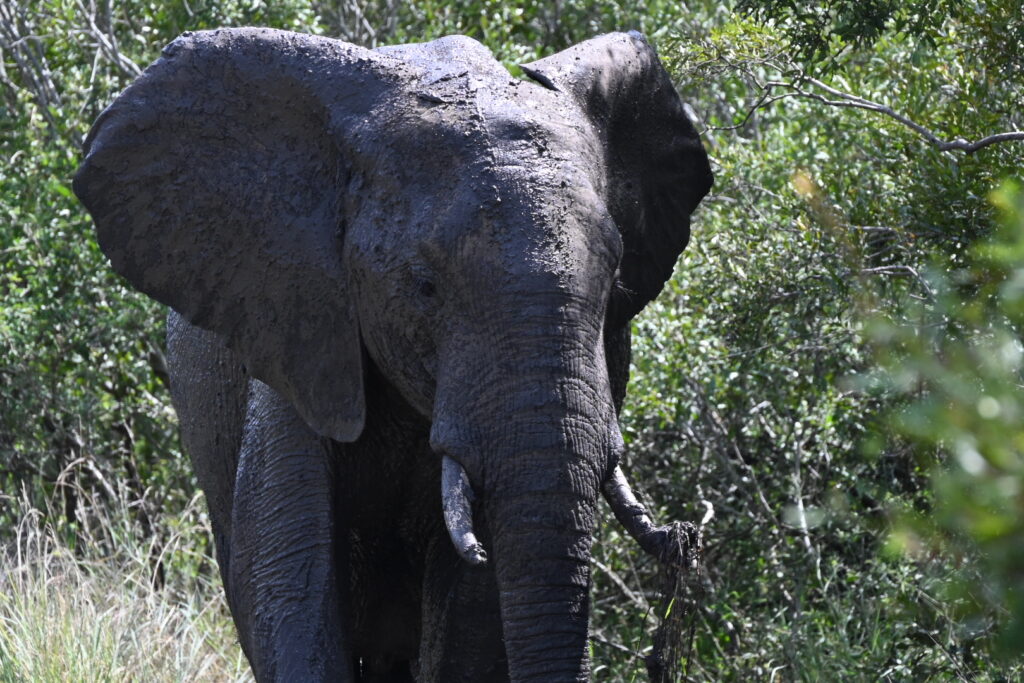
Including a baby:
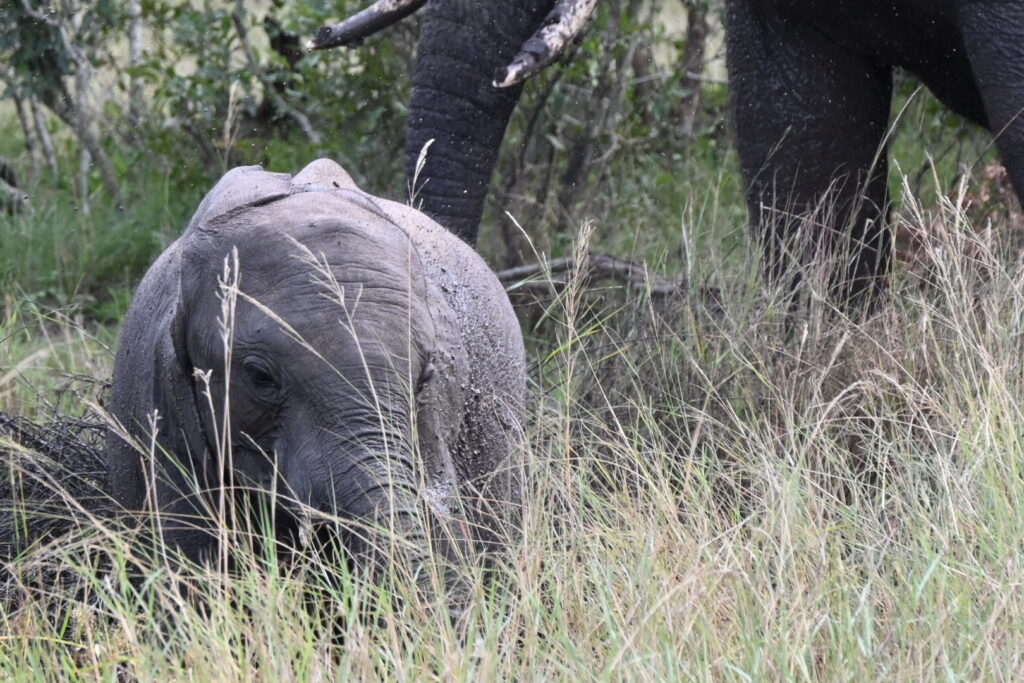
We soon arrive at Dulini River, which is equally upscale but with a bright, modern vibe:
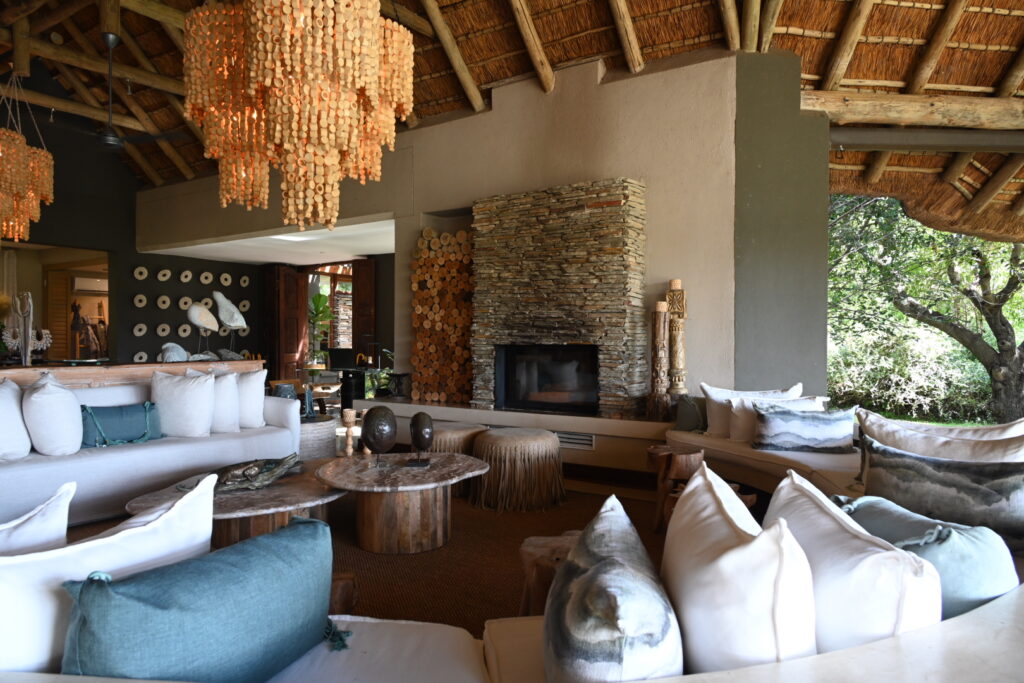
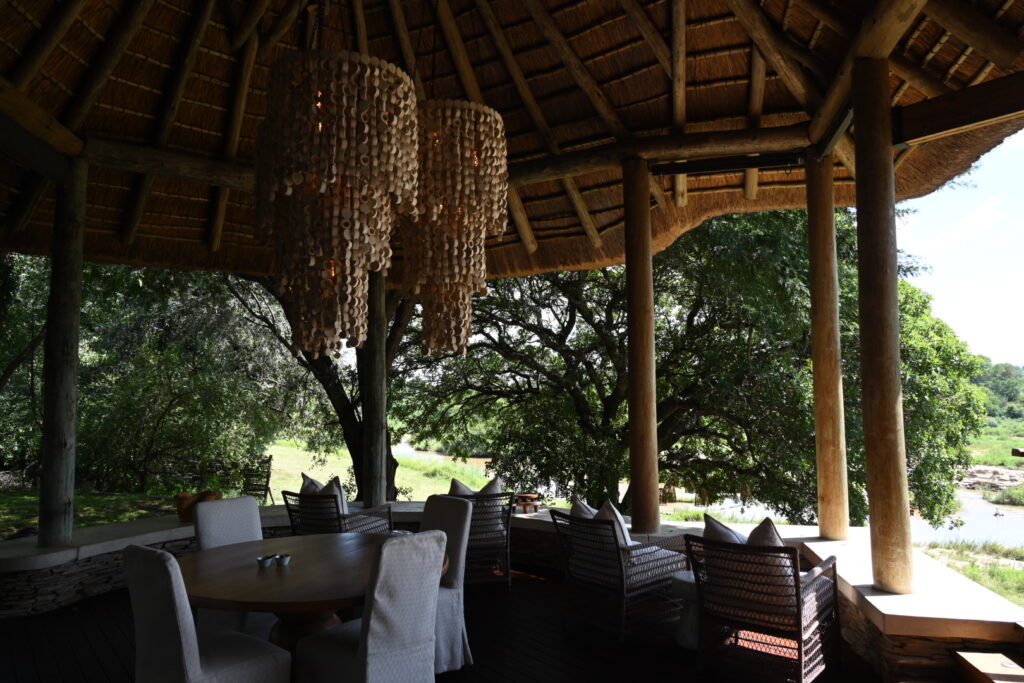
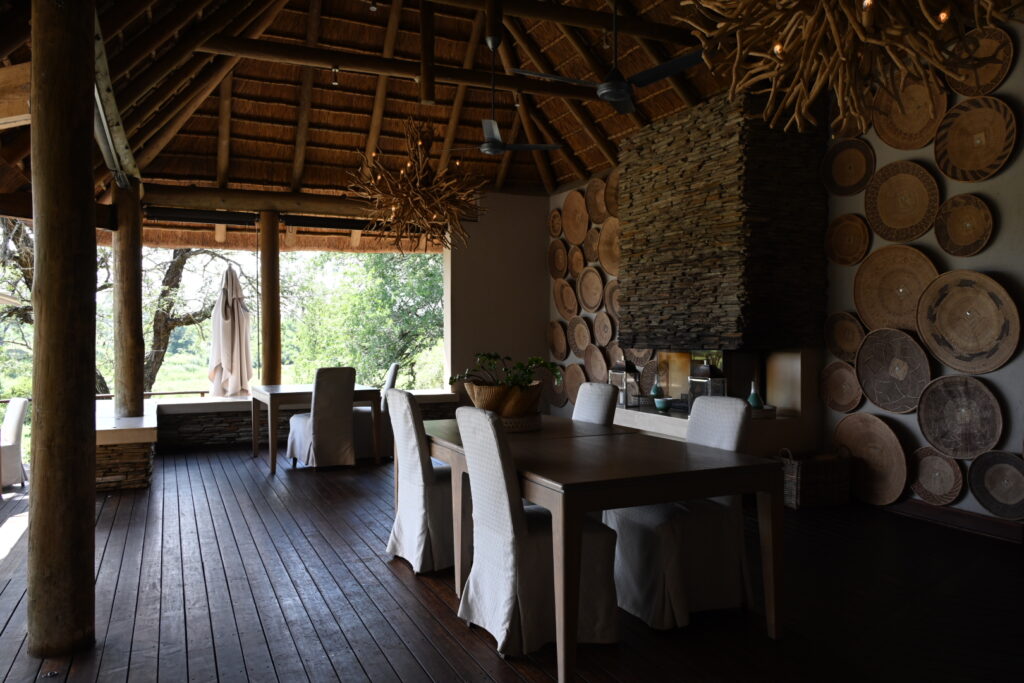
The views of the river are also stunning:
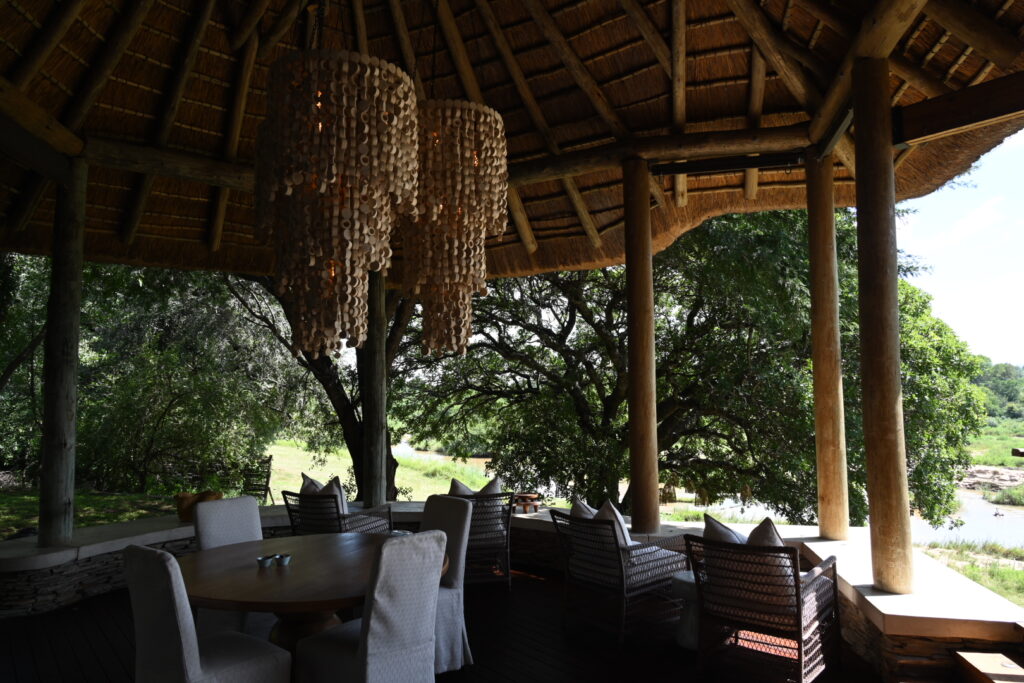
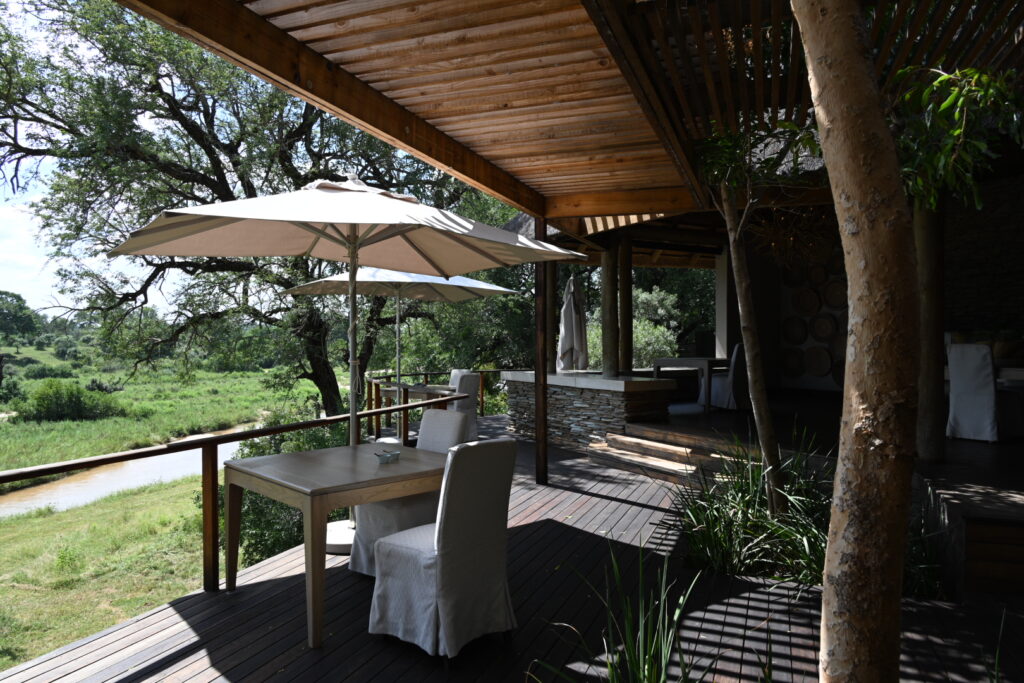
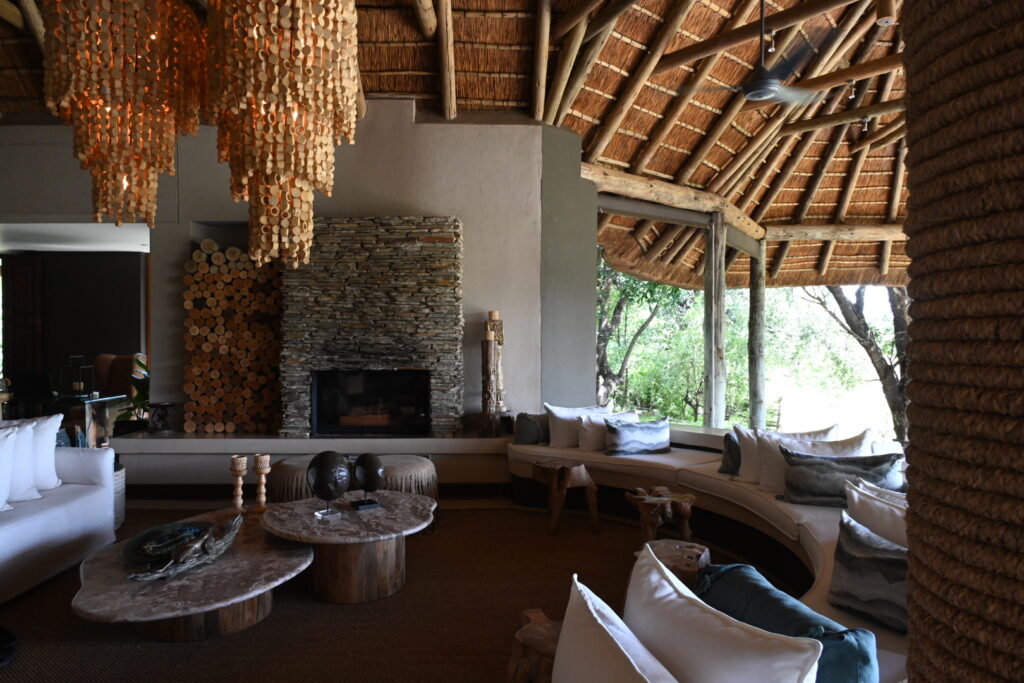
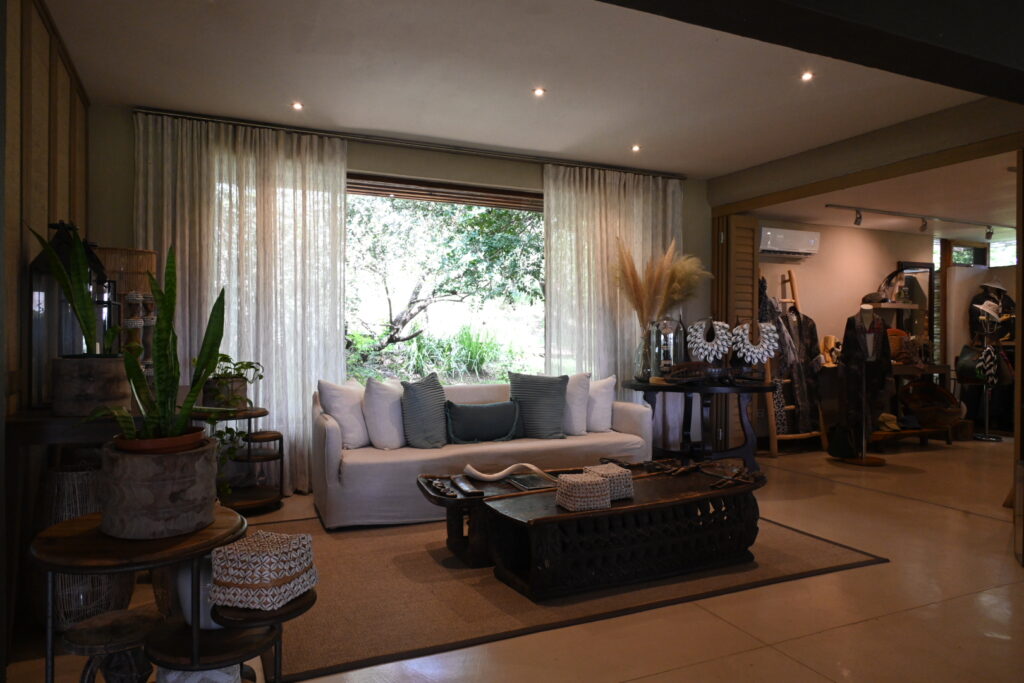
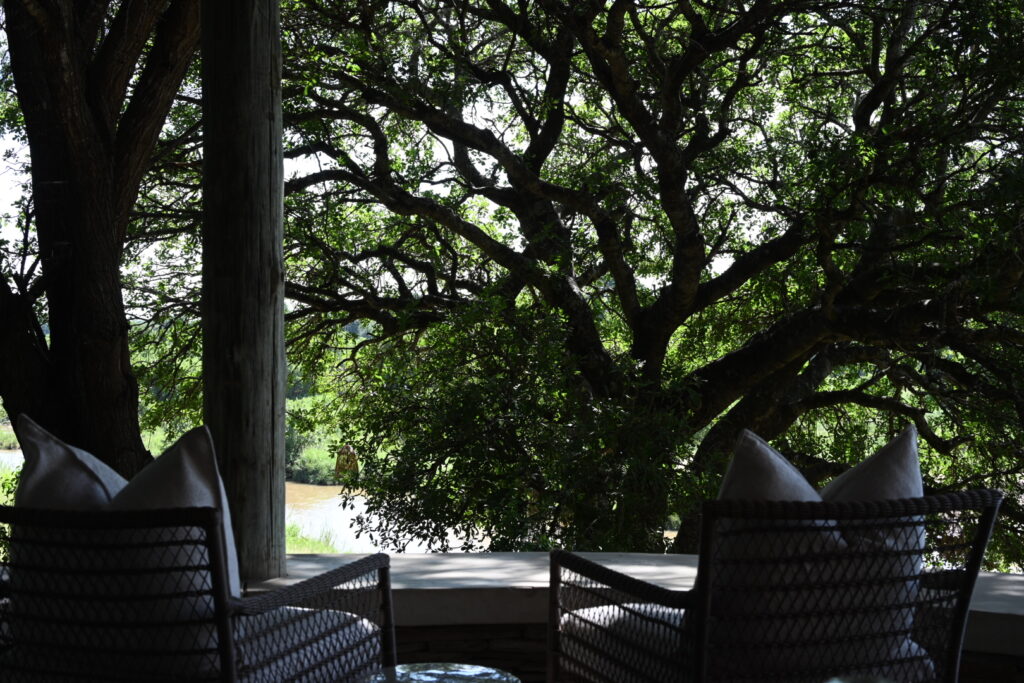
Then off to our rooms, which are also done in the same light, modern style:
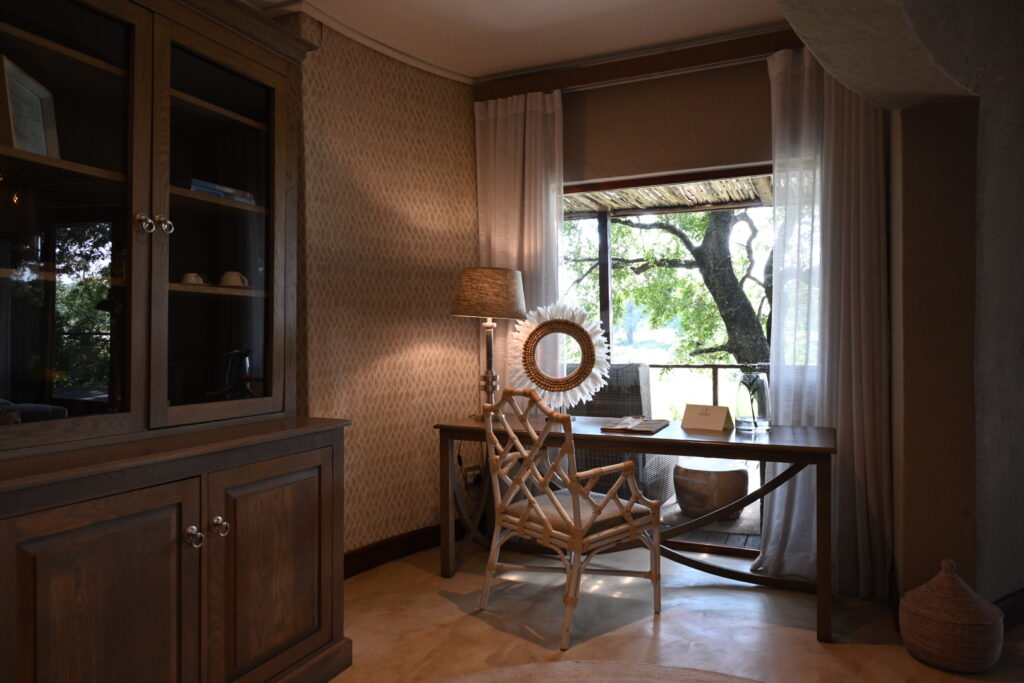
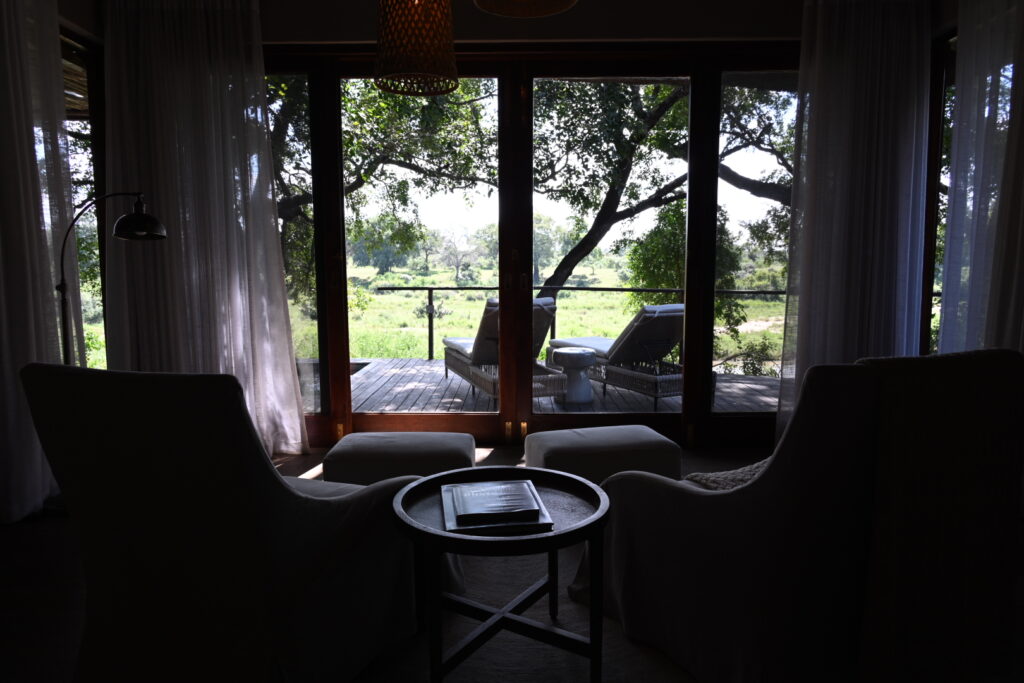


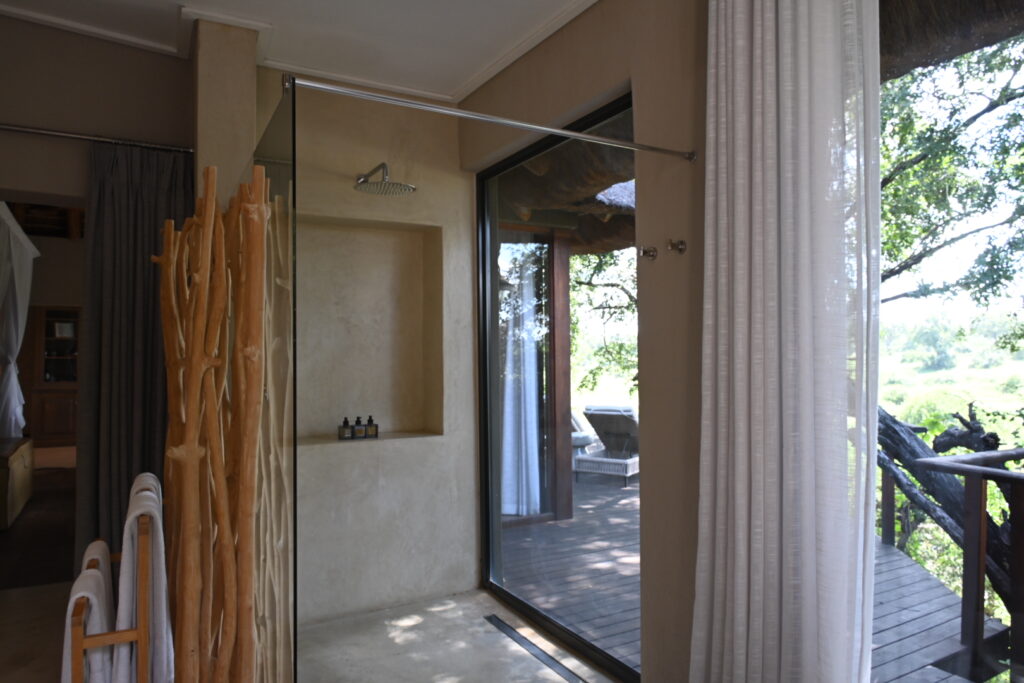

Time for lunch! Calamari again, plus a baked lentil stew that’s almost like a quiche:
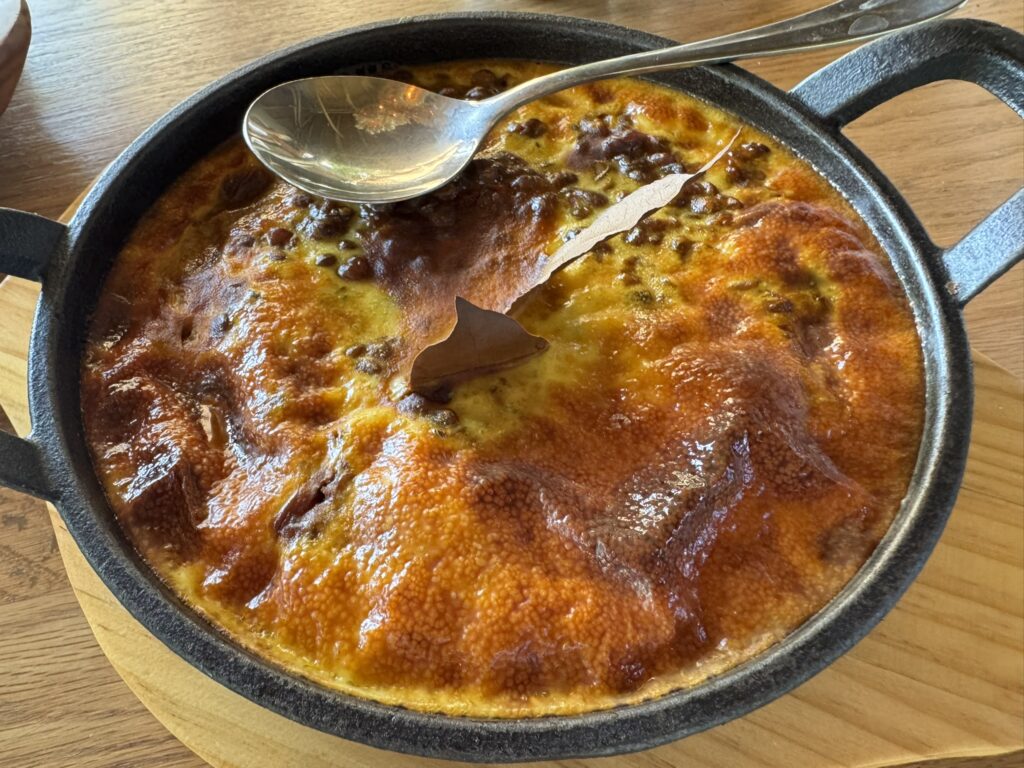
The kids have plain pasta, but are excited for steak later tonight – the chef has been great about talking us through the menu each day so we can make alternate arrangements for the kids as needed. (Though generally they’re willing to try most dishes.)
We explore the resort, and spot a few critters, including a milkweed butterfly (Euploea):

And a golden orb weaver:

The kids are initially disappointed that Dulini River doesn’t have a central pool like Dulini Moya, but then our butler, Darren, kindly suggests that we use the small exercise pool out at the gym. It’s not as large as the one at Moya but fine for a well-controlled game of skip-ball. (Again being careful to not disturb our fellow guests.)
However, this seems a reasonable trade off for the truly exceptional view here at Dulini River – and the opportunities it offers for wildlife watching. Like when an elephant wanders past while you’re waiting for your 4 pm game drive:
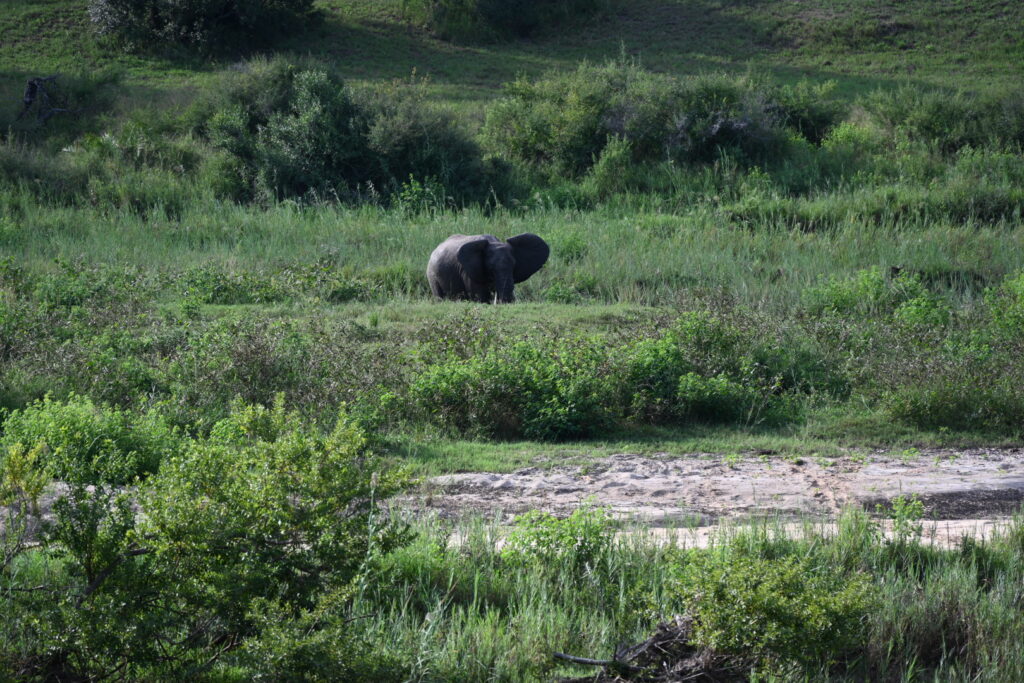
We enjoy some delicious eclairs as part of afternoon tea:

And we meet our new guiding team – our guide Nathan and our tracker, Colbert. We explain what we’ve seen so far, and Nathan confirms that’s a tough act to follow. Having seen the Big Five, we propose what we’ve termed the Hard Five – pangolins, cheetah, wild dogs, ardvaark and the honey badger. Nathan laughs and says that should be termed the Impossible Five, but he’ll see what he can do.
With that, we depart on our afternoon game drive. We start by spotting some kudu:
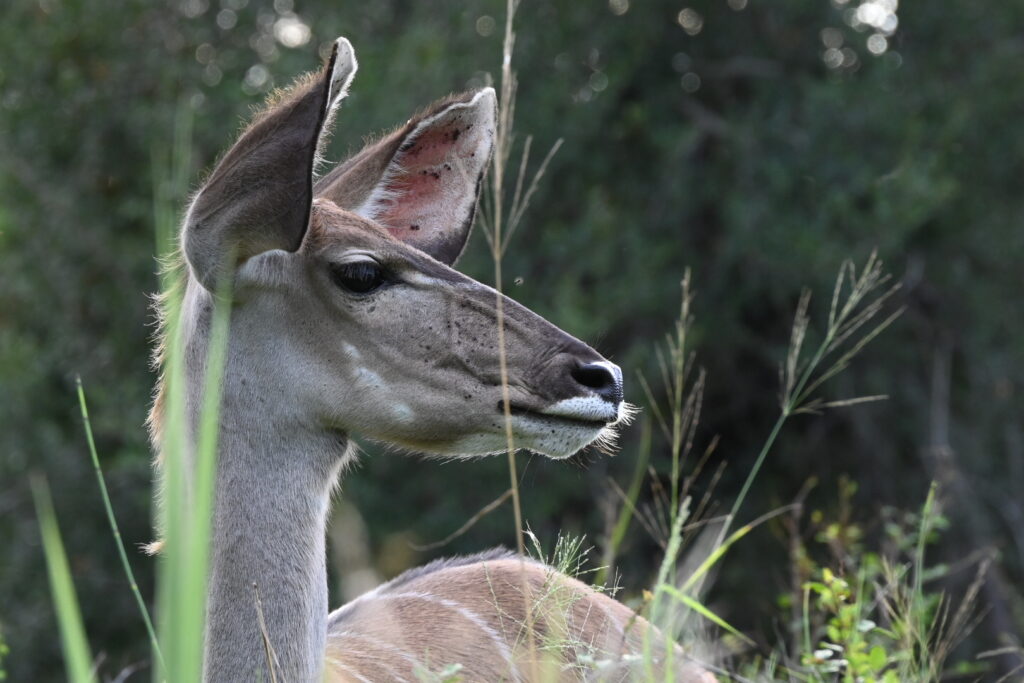
And then an older female elephant which picks up a bit of momentum while thundering down a hill toward us, giving us a brief scare. He says that elephant are almost always fixated on food, so if they look you in the eye you know that you have their attention – which is rarely good to have.

You can tell she’s older from the more pronounced divets by her temples.
We then come across another bushbuck – a male this time:
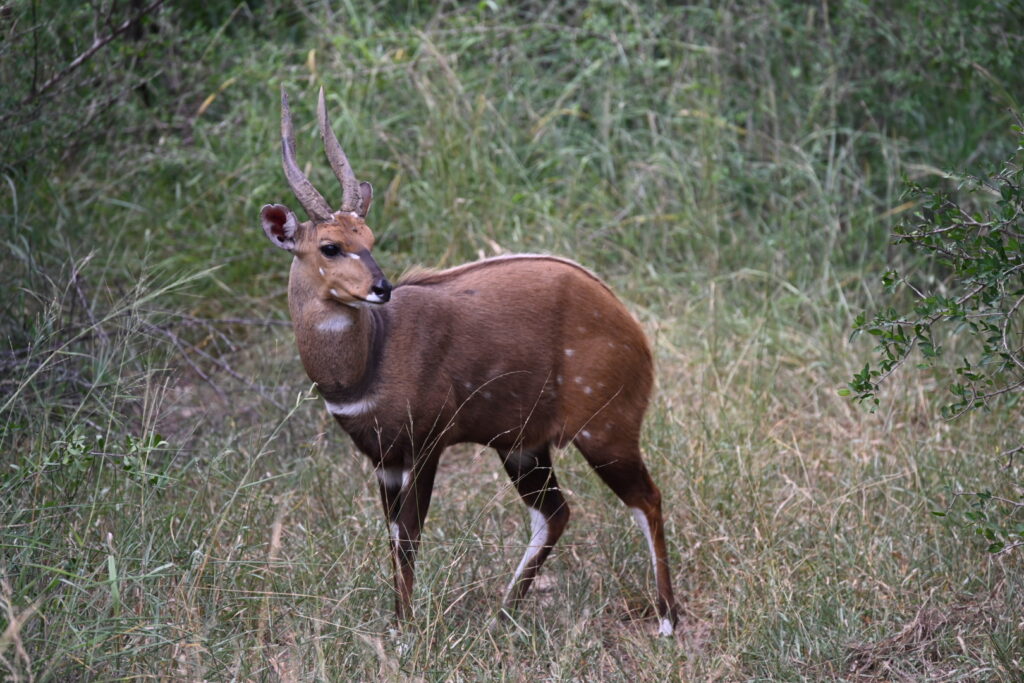
While tiny, they can be quite dangerous when cornered – the will charge, and their horns are razor-sharp. Several of the guides have been injured by them at one point or another.
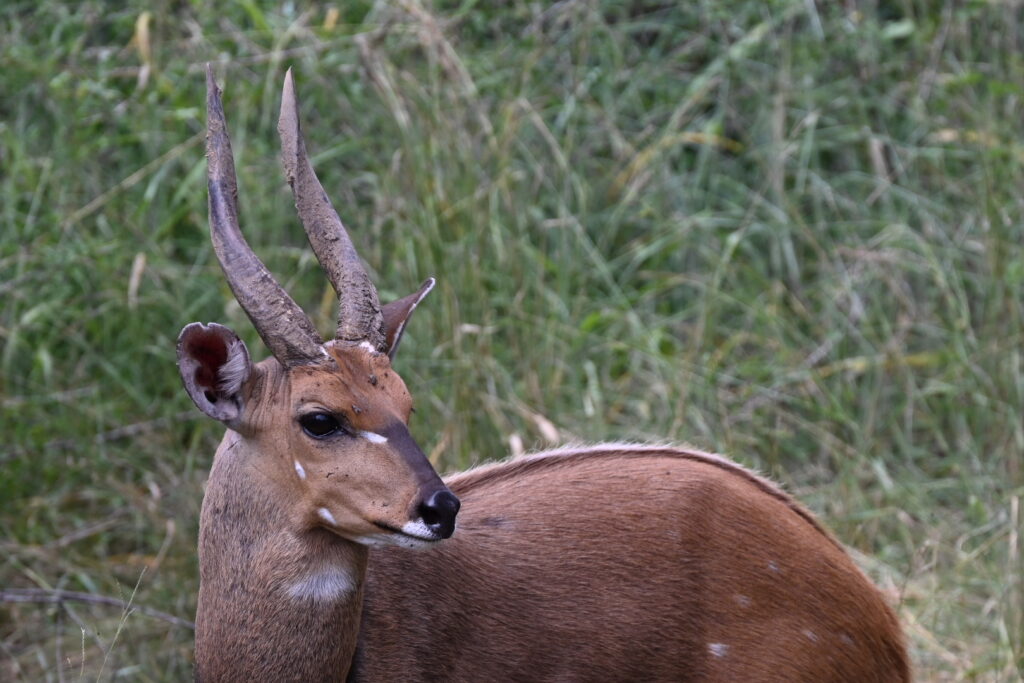
Nathan says that we’ve gotten word regarding a rare and elusive sighting far to the north – one of our Hard Five, though he refuses to say which. The sole hint he gives is that perhaps only 5% of guests get the chance to see them.
But before that, we get the call that the leopard Rivala has been spotted again. We go to investigate:
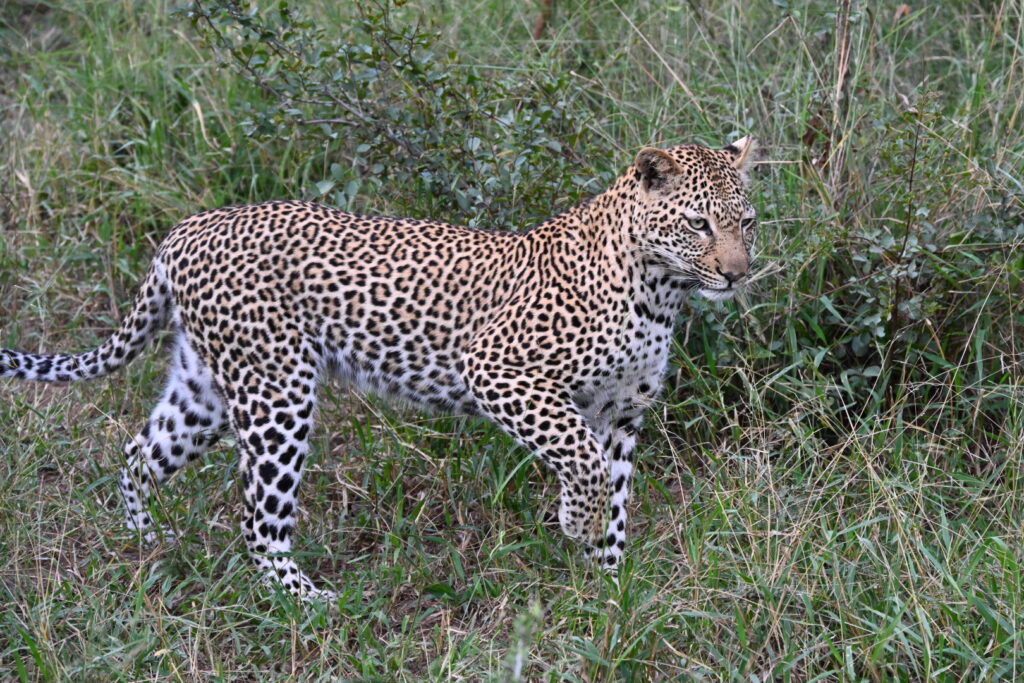
She’s moving quickly, and it’s tough to keep up:
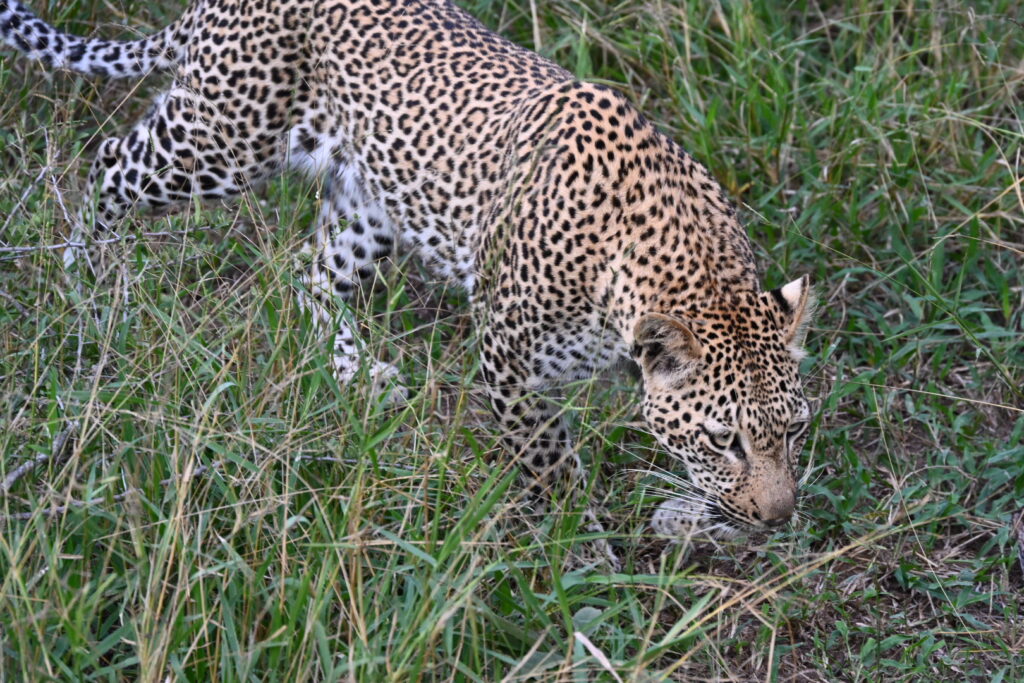
We’re staying just a bit ahead of her:

She scents the air:
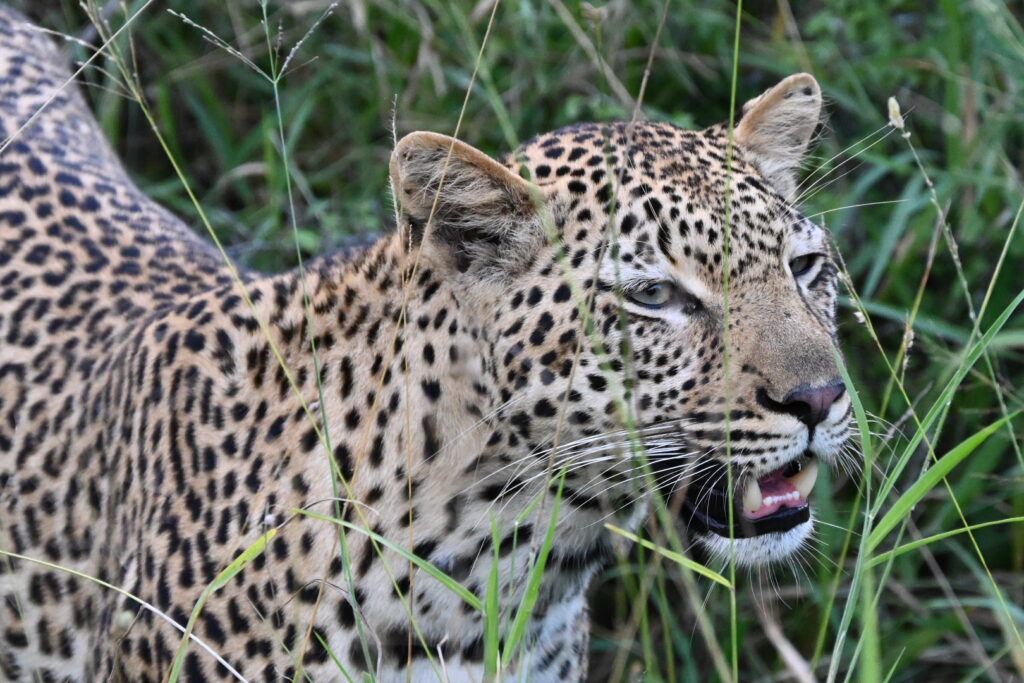
And gets caught in a rare but adorable “blep”:
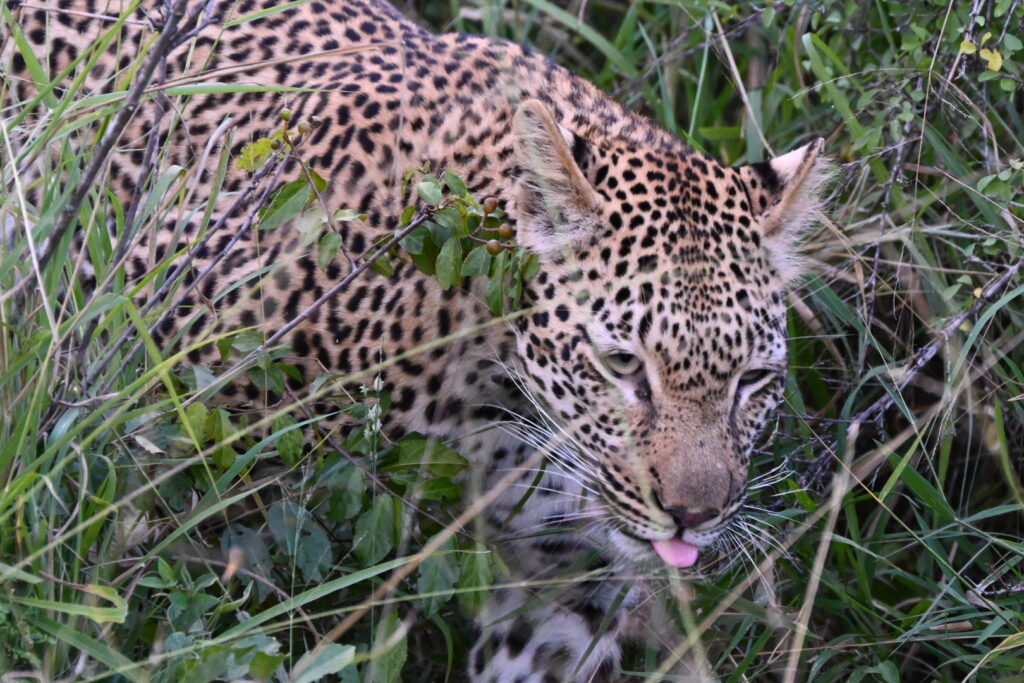
She comes a bit closer than we were expecting:
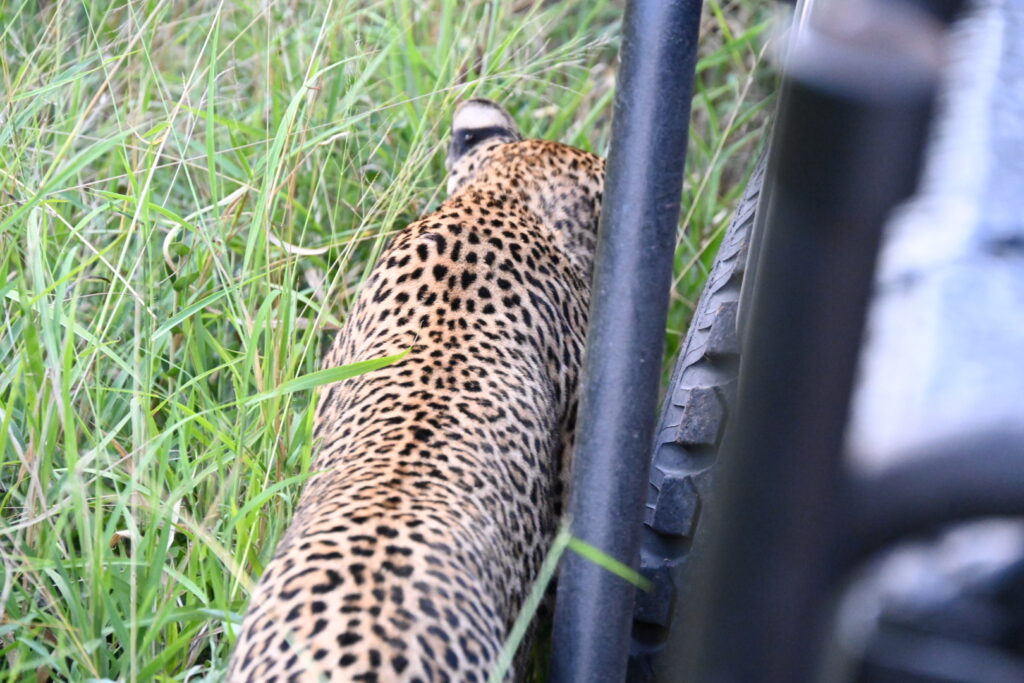
And like that, she’s gone again. These leopard encounters are incredible – always so much going on in such a brief period of time.
But! We still have our mysterious encounter to reach, and so we carry on once more:
We ford the river, heading north:
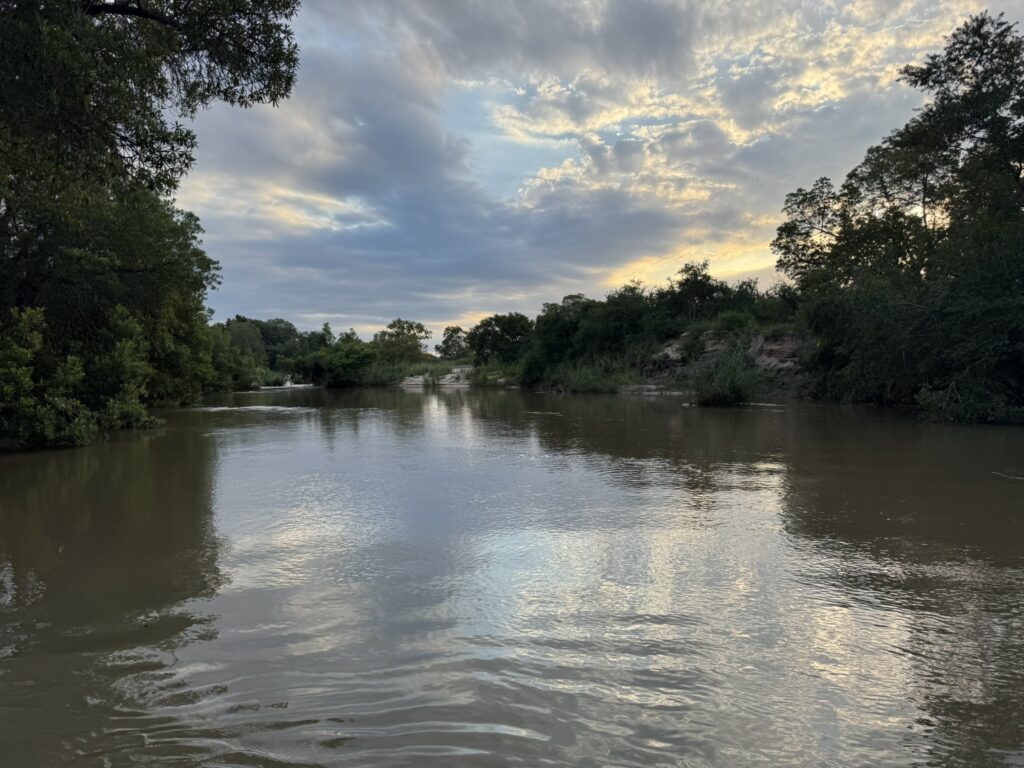
And we see a white rhino! In the daytime!
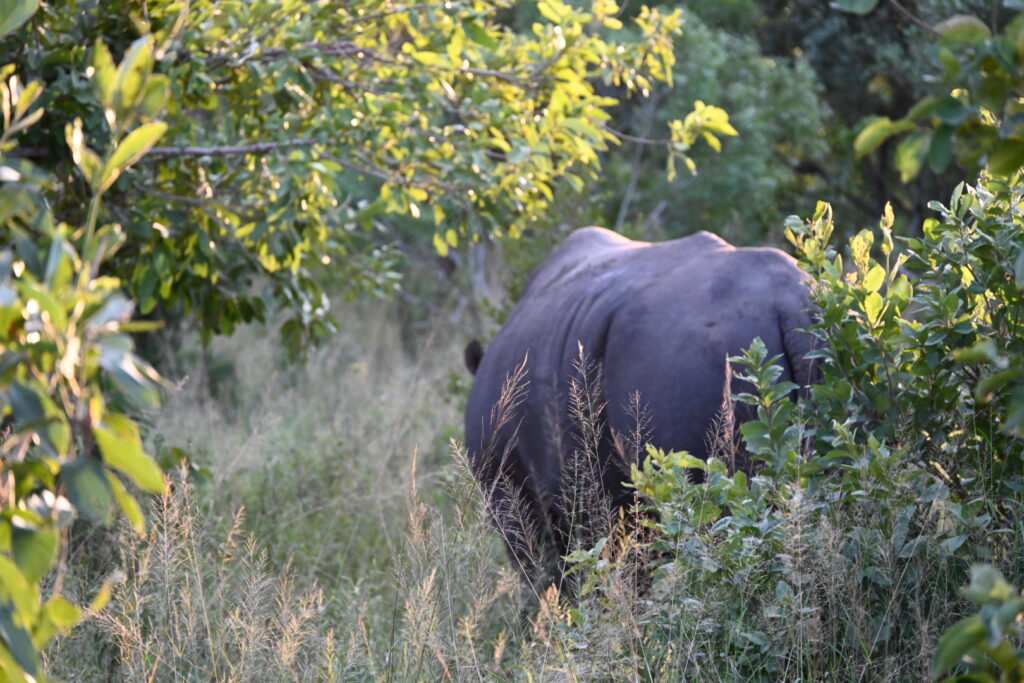
He’s quite fixated on his dinner, and proves difficult to photograph:
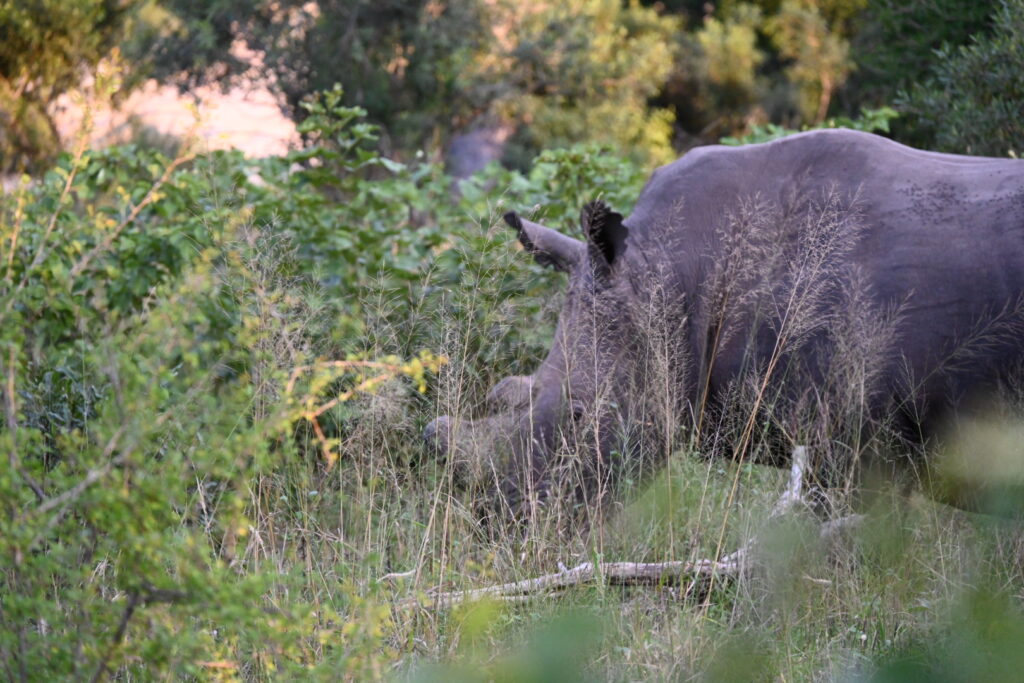
But we get there in the end:
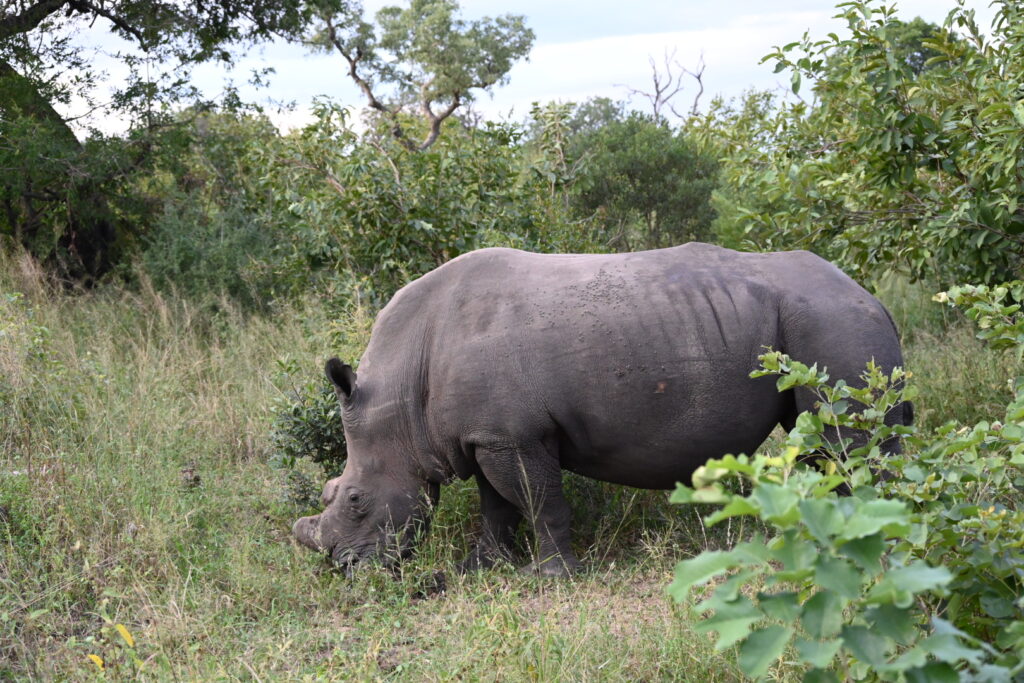
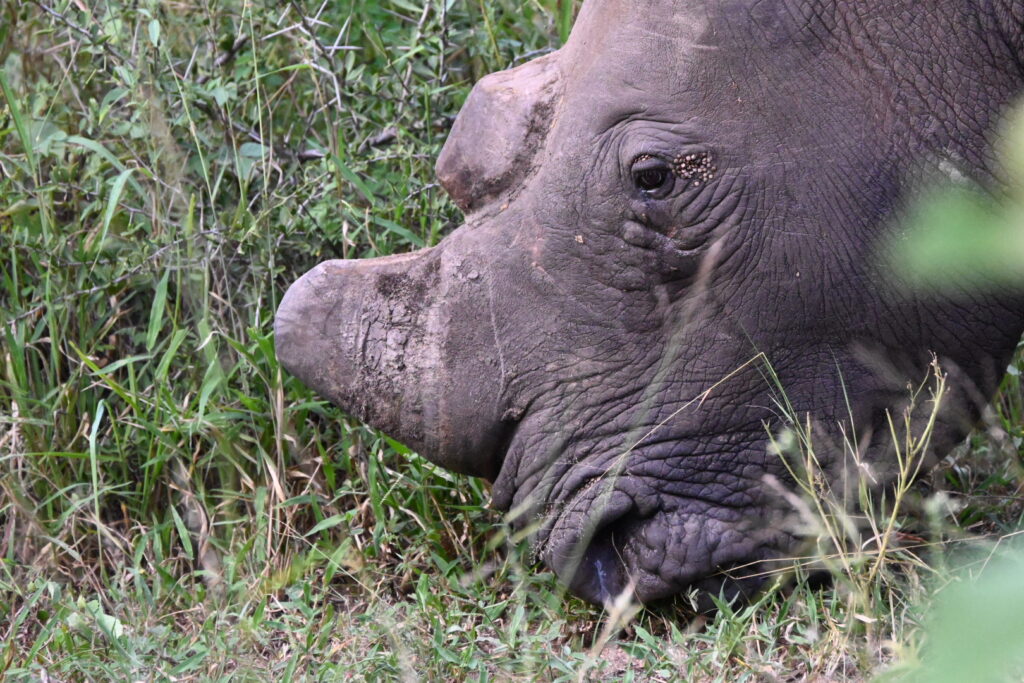
But we’ve gotten distracted again – onward and upward.
Unfortunately, of the river banks is washed out by a recent flood that was severe enough to uproot this tree:
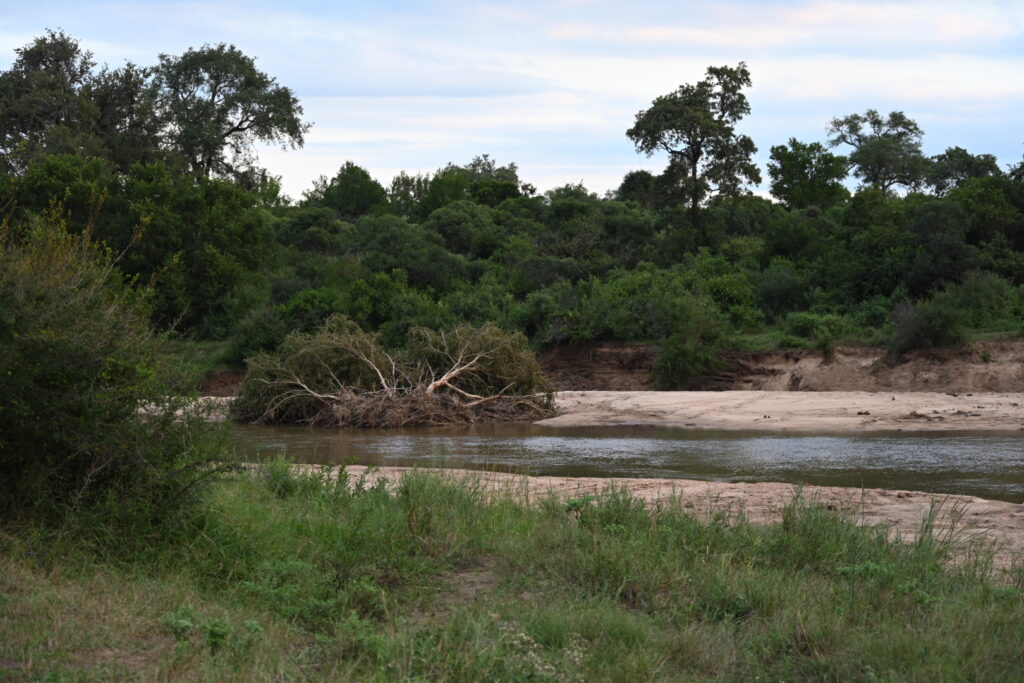
So we need to find a workaround. And we do – which brings us to sunset giraffes:

Nathan makes an exasperated noise – both thrilled to be showing us these incredible animals, but also concerned about his timeline. Daylight is wasting and we have no way of knowing how long we’ll have to spot whatever-it-is.
We continue to bash north, and Sabi Sands keeps throwing incredible animals at us – pregnant zebras! Running giraffes! Fighting impala! But there’s no time to stop – we must keep moving.
And eventually – after much repositioning and bush-bashing, we find them.
One of our Hard Five – African wild dogs:
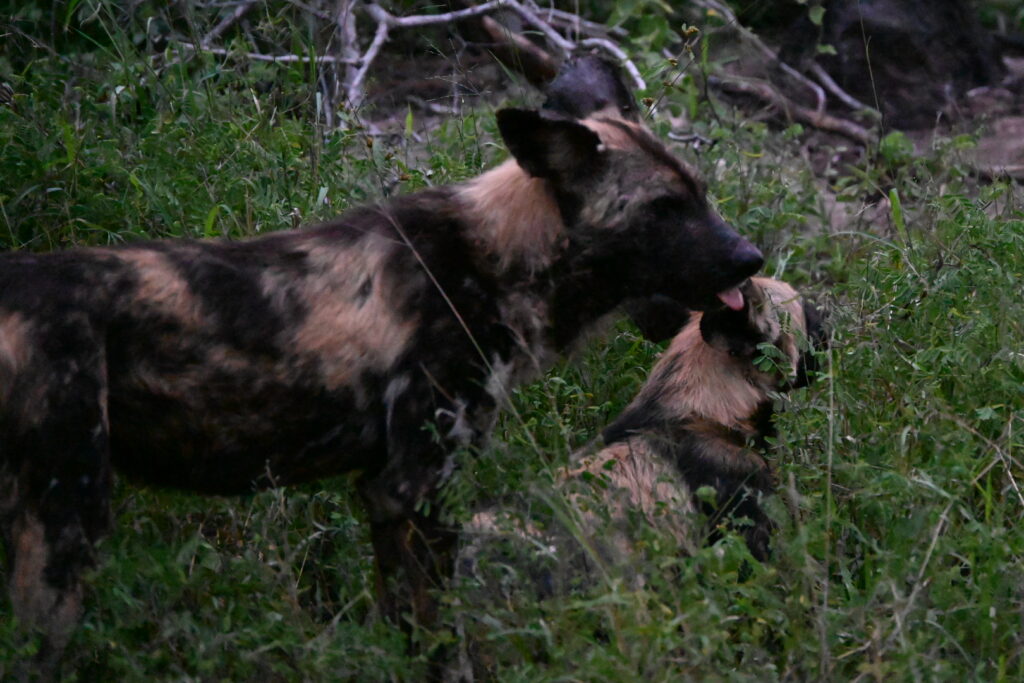
This one even has a pup.

The light is getting low, so they’re challenging to photograph.

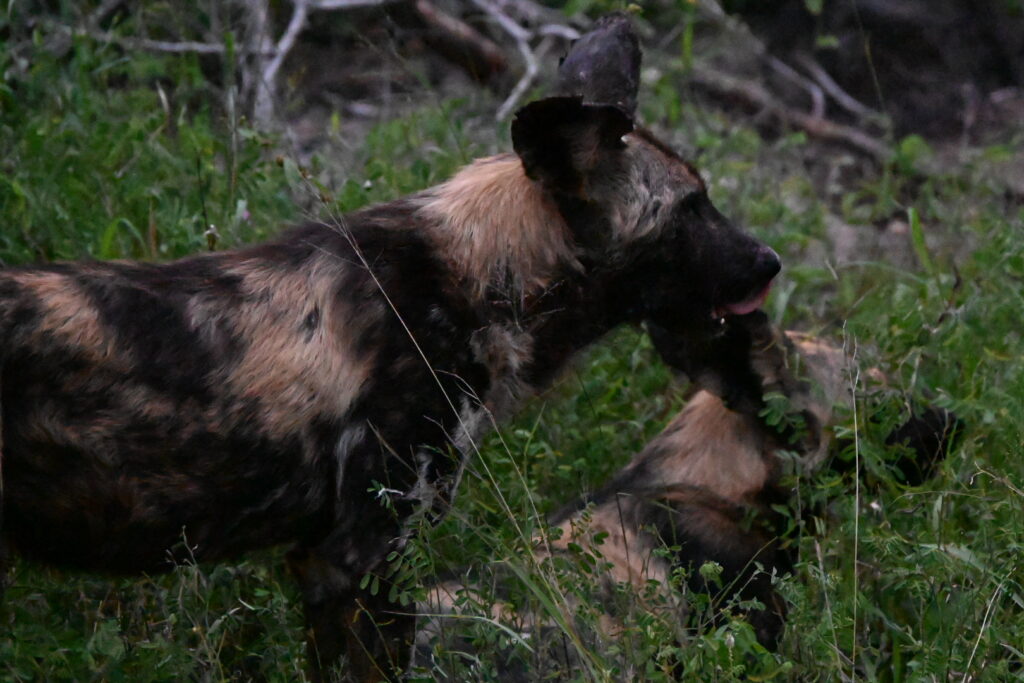
But we do as best as we can in the conditions.
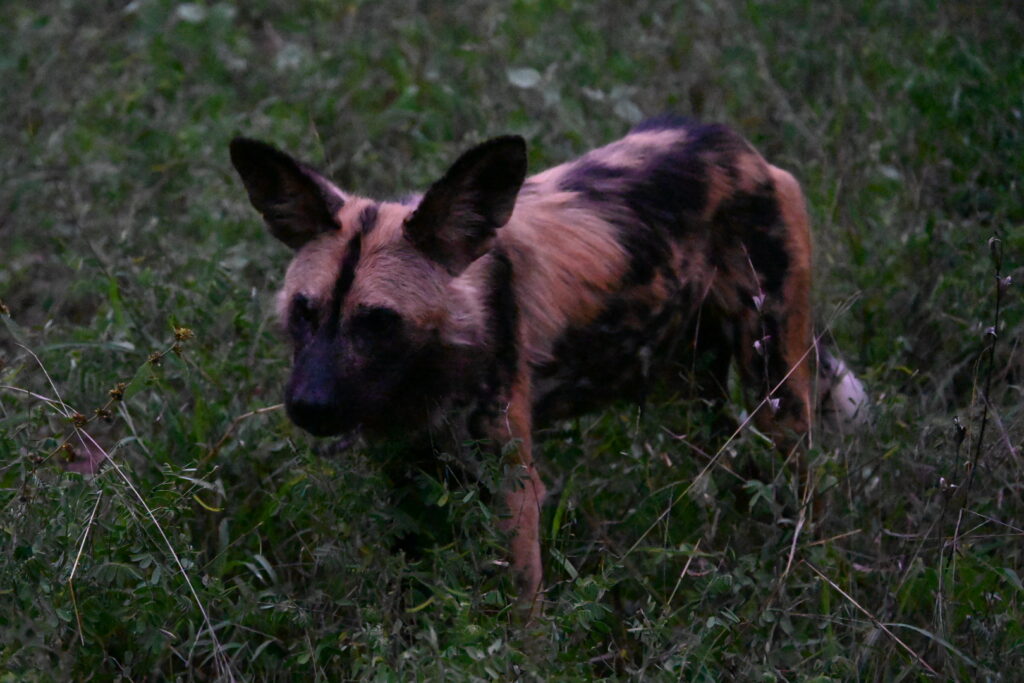
They are absolutely beautiful creatures, and they hunt like a well-oiled machine. They caught a hare just before we arrived, and move through the forest with careful coordination.
There are fewer than 500 African wild dog left in South Africa, and only a few thousand remaining worldwide. (We’ve seen estimates ranging from 1,500 to 6,500 total.) This is a very, very special encounter, and one we won’t soon forget.
We’ve missed our sundowners again, but it was well worth it. We spot a few of the usual suspects on the drive home, but mostly we just enjoy the river and the moonlight. It’s quite special indeed.
Back to Dulini River, where they have a special dinner laid on for us beneath the sausage tree:

The resort looks magical from down here:
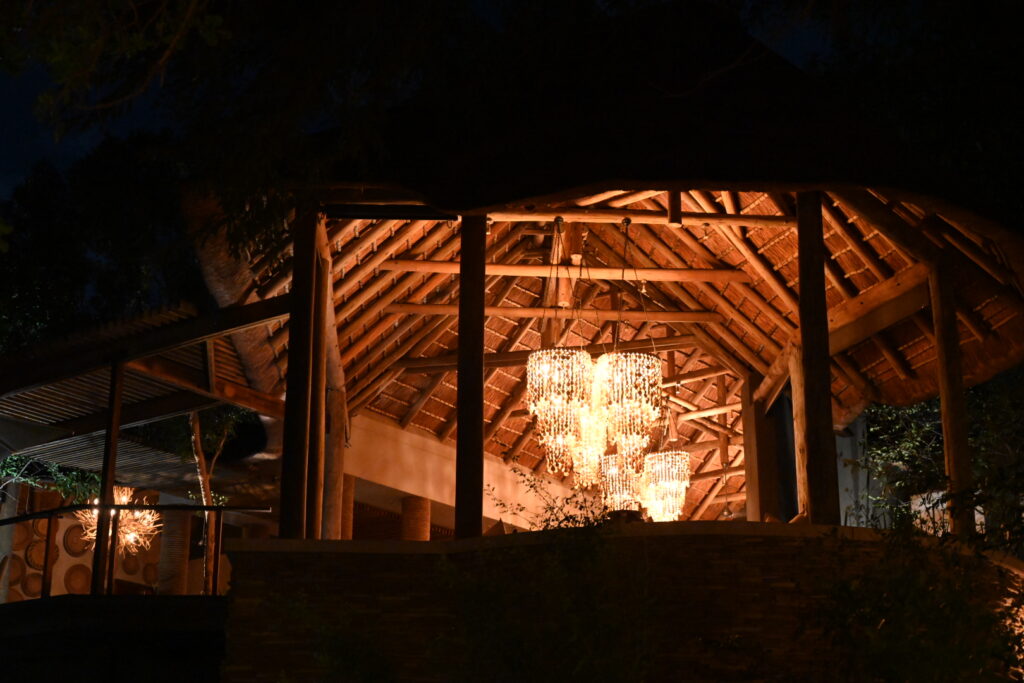
As does the drinks table, which is very well laid out indeed:
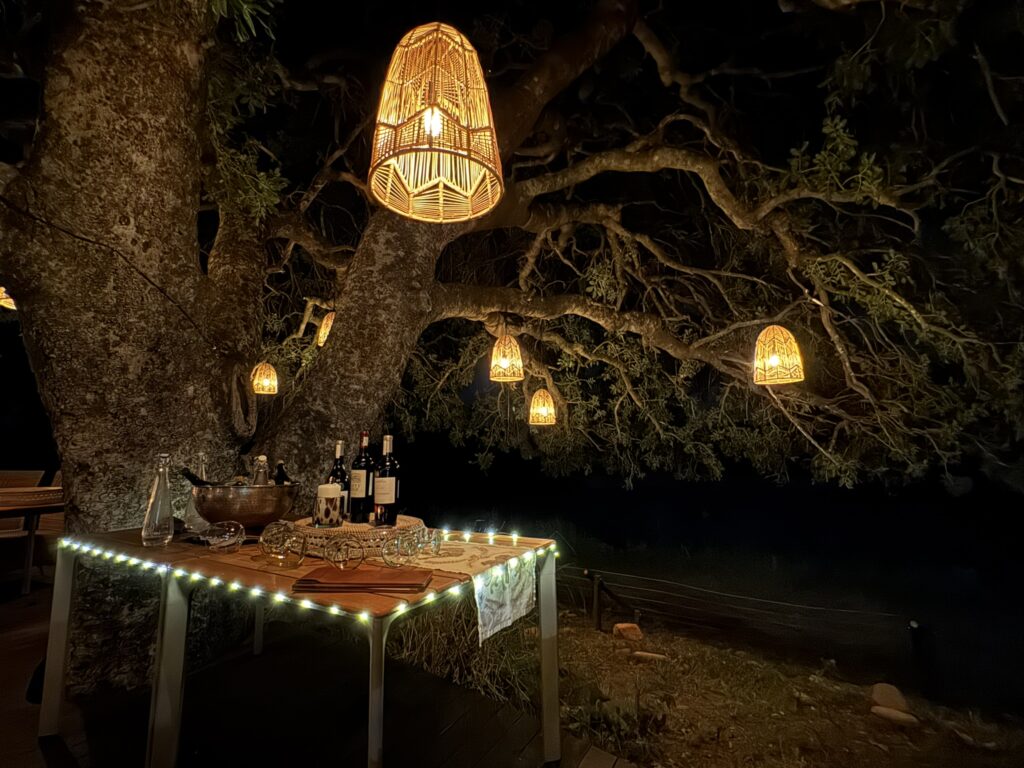
My wife starts with a ginger squash soup:

While I have the prawns:
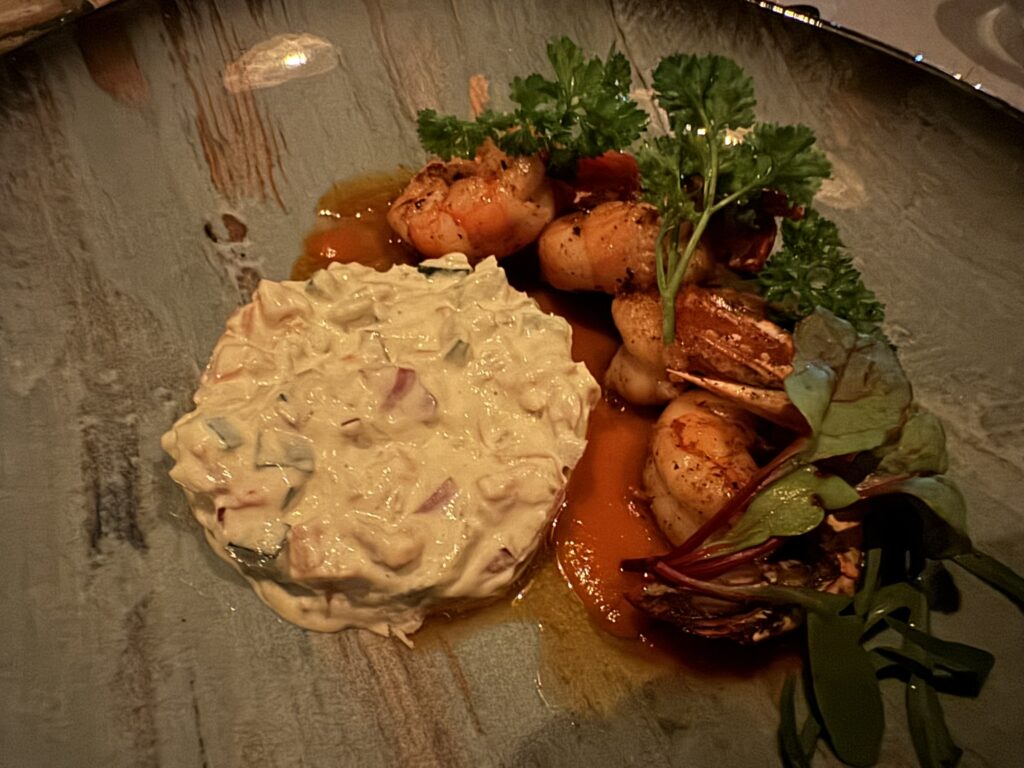
Then a beef filet for our main course:
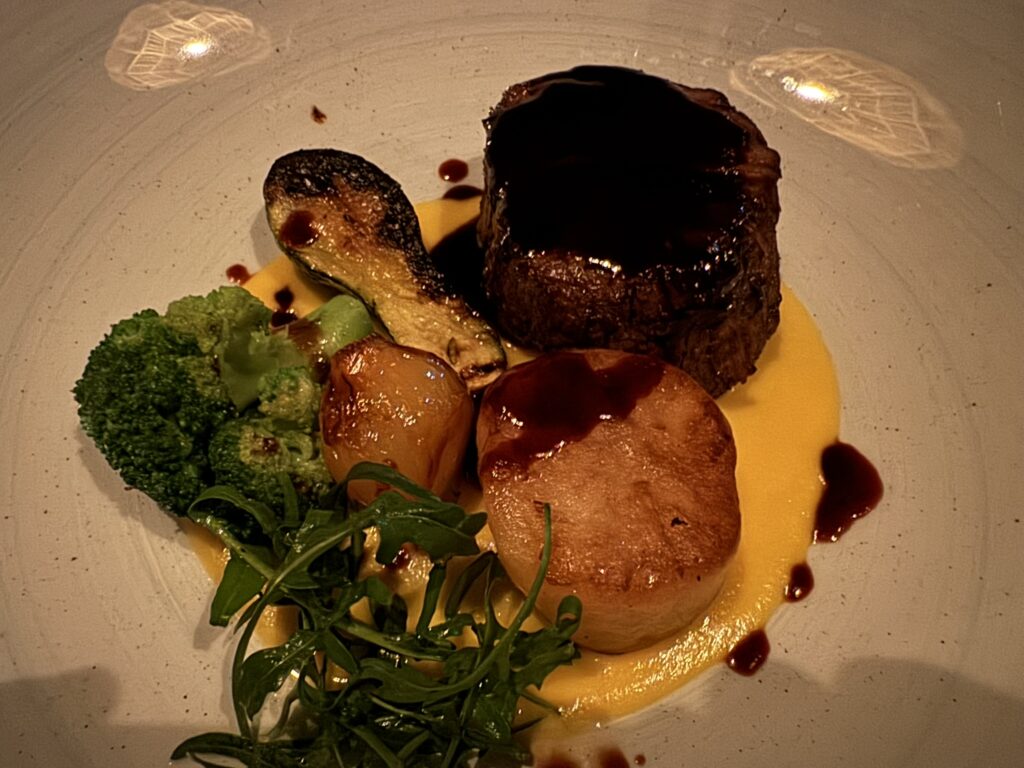
Followed by a Van der Hum (tangerine liquer) creme brulee:
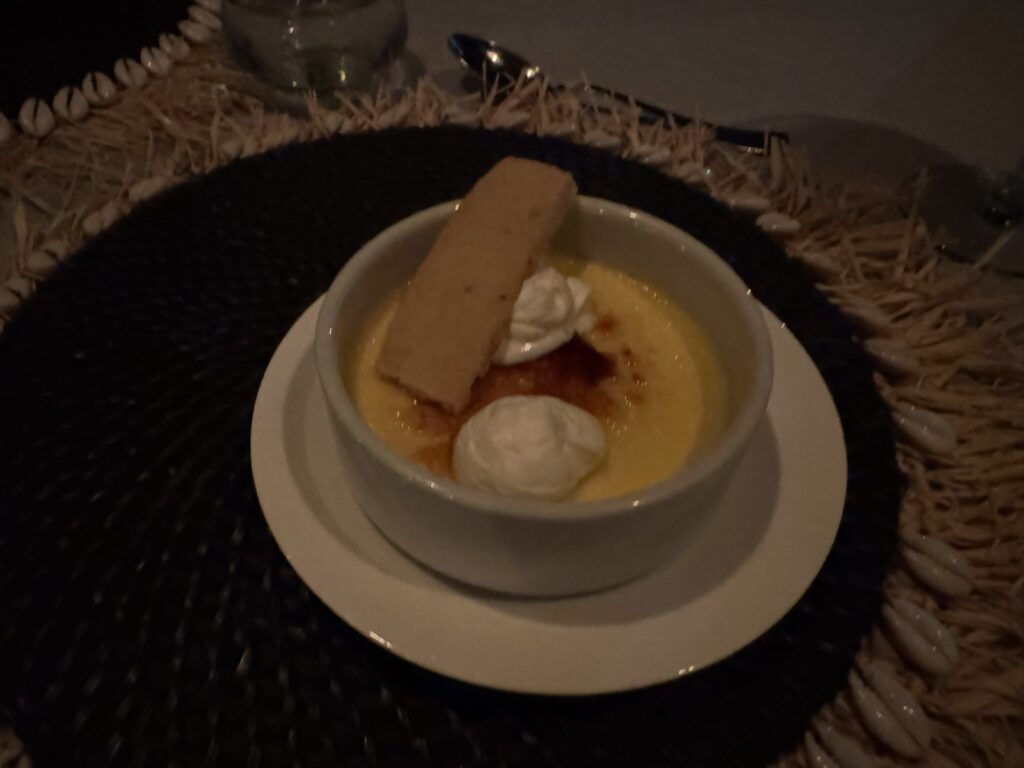
Then we are once more off to bed, to dream of the chance encounters that tomorrow might bring.
